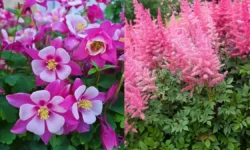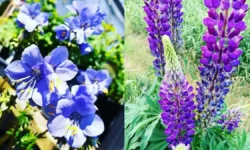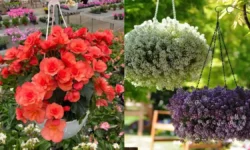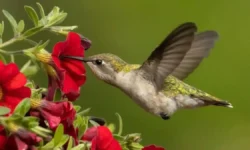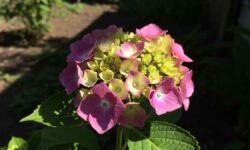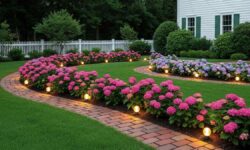If you’re choosing the best flowers to attract hummingbirds, here’s my favorite truth: you don’t need a huge yard, just the right nectar-rich shapes, steady bloom times, and a few smart pairings. Red, coral, orange, magenta—those trumpety, bell-shaped blooms act like neon “open” signs. Below I’ve rounded up 27 of the best flowers to attract hummingbirds, complete with characteristics, identification tips, USDA Zones, sun exposure, soil needs, and color notes. I also sprinkled in little confessions from my own fussy-gardener brain (yes, I have opinions).
Table of Contents
The best flowers to attract hummingbirds (complete list + growing details)
1) Bee Balm (Monarda didyma)
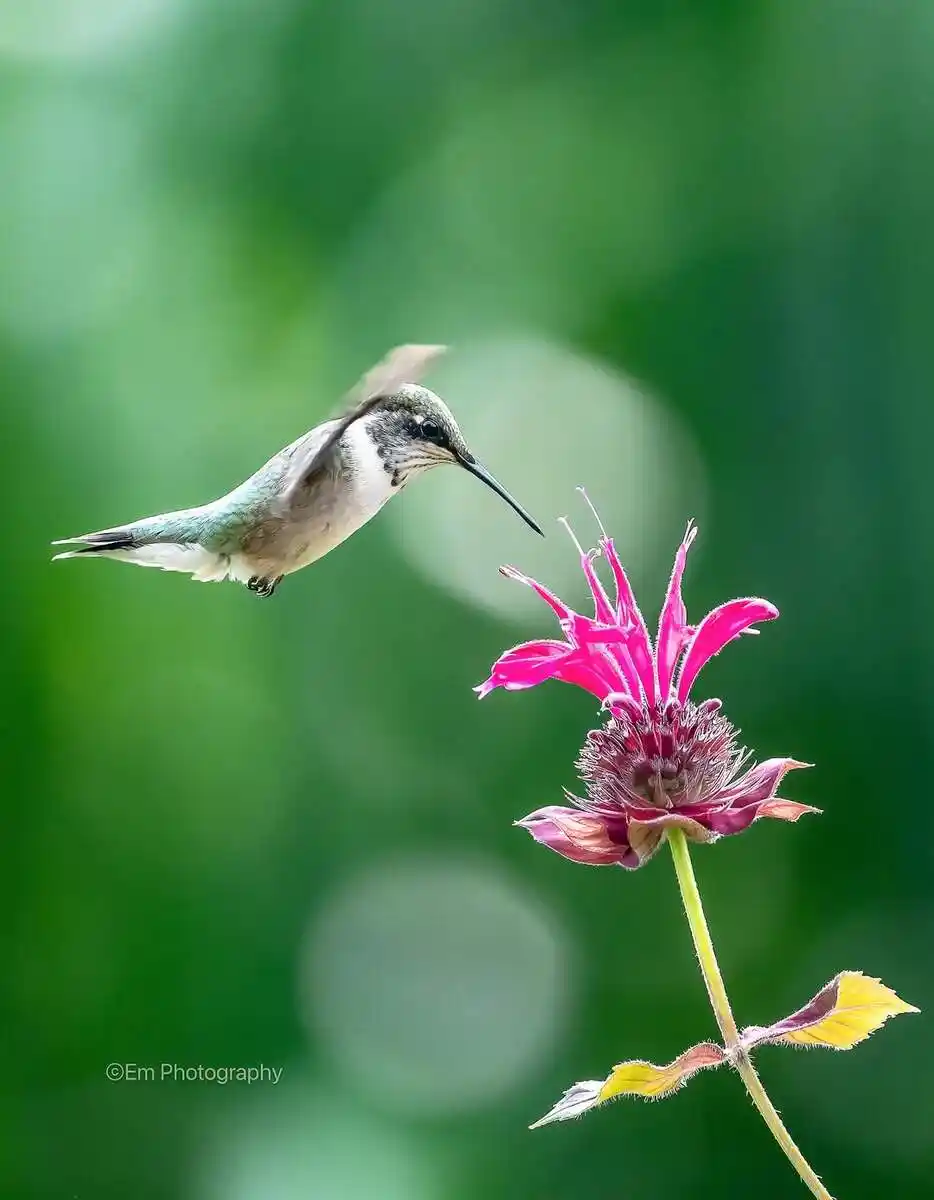
Those frilly, firework-like heads? Hummingbirds spot them from a mile away. Bee balm is a summer showoff with shaggy, tubular petals that sit atop tall stems. It’s clump-forming and gets better each year if you divide it every few seasons. I love tucking it where I need a bold “stop sign” of scarlet. As a bonus, it perfumes the whole bed with a soft herbal note.
Type: Herbaceous perennial
USDA Zones: 4–9
Color varieties: Primarily red (also purples and oranges)
Sun: Full sun to partial shade (more sun = more blooms)
Soil: Rich, evenly moist soil; don’t let it bake dry for long
ID tip: Square stems and minty, aromatic foliage (it’s in the mint family).
2) Cardinal Flower (Lobelia cardinalis)
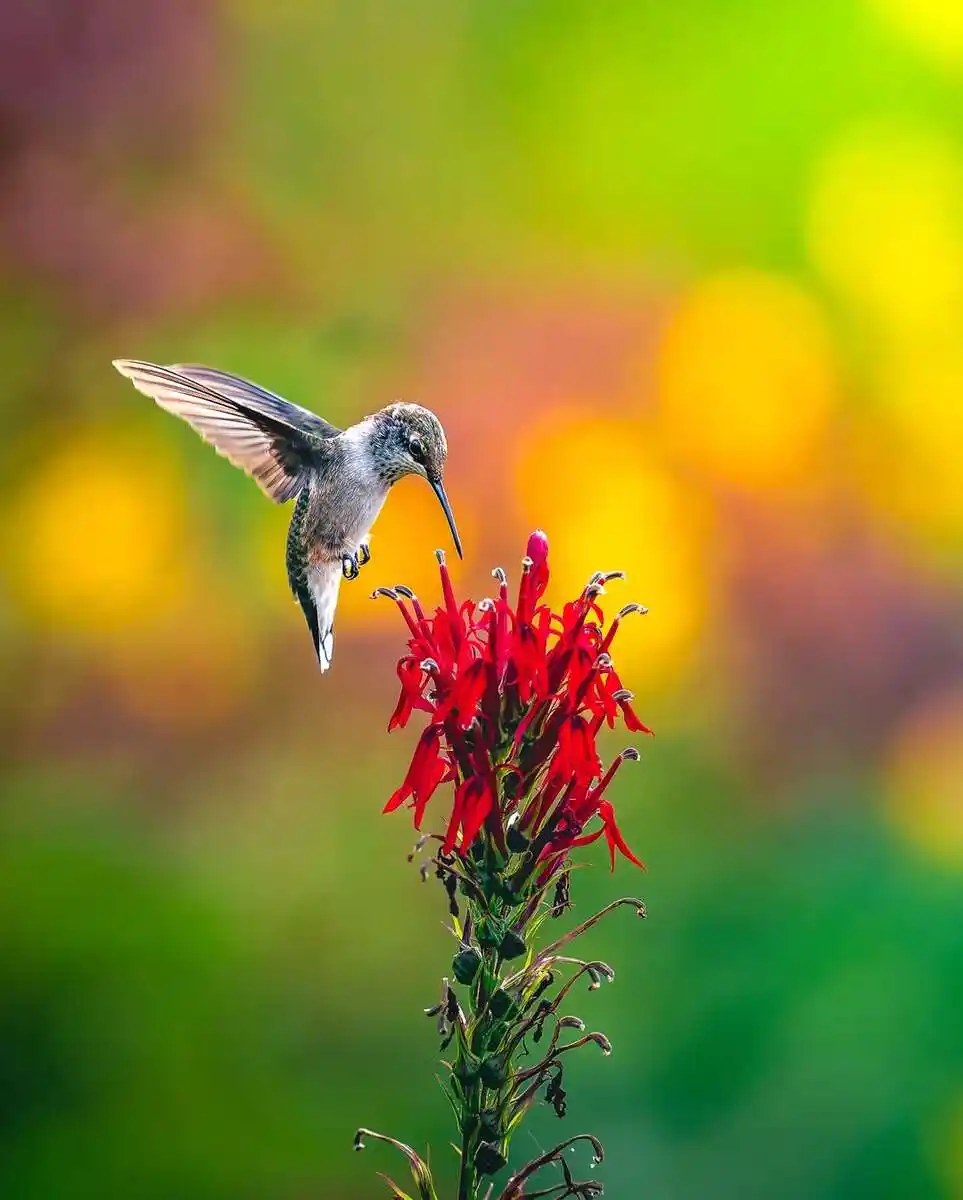
Cardinal flower is a true magnet: towering spires of vivid red tubes sized perfectly for those needle beaks. It’s a short-lived perennial, but it self-seeds politely, so once you’ve got it, you tend to keep it—especially near damp spots. I treat it like a small colony plant at the back of a border.
Type: Perennial
USDA Zones: 3–9
Color varieties: Scarlet (white and rose exist but red wins for hummers)
Sun: Full sun to partial shade
Soil: Rich, consistently moist to wet; mulch helps in cold regions
ID tip: Vertical spikes; glossy, deep green lance leaves.
3) Zinnia (Zinnia spp.)
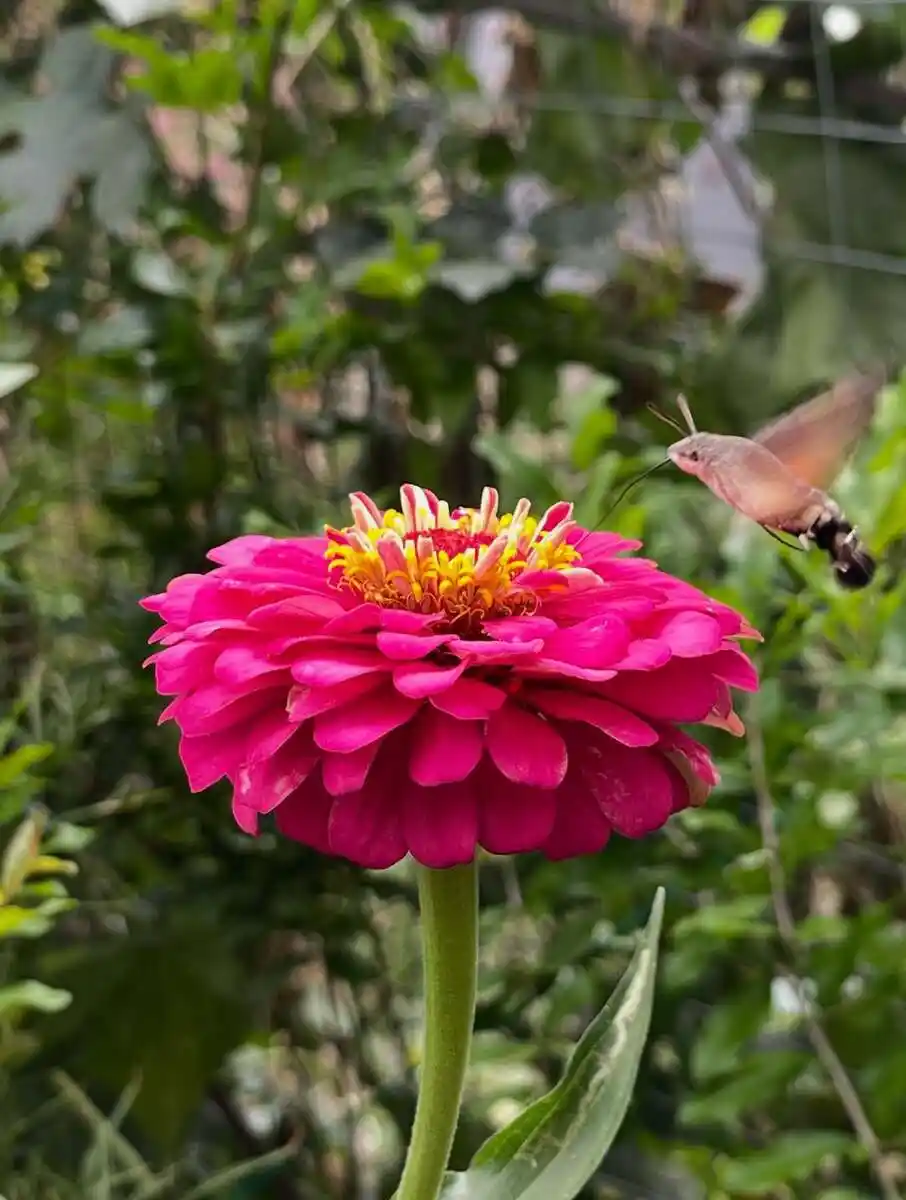
Zinnias are the summer candy store. Big, bright, easy from seed, and generous with nectar. I scatter-sow a patch near a seating area because hummingbirds aren’t shy about cruising low to sip. Choose tall types for cutting and feeding, and deadhead hard to keep the parade going.
Type: Annual (tender perennials in warmest zones)
USDA Zones: 2–11 (grown as annuals almost everywhere)
Color varieties: Virtually everything but true blue and brown
Sun: Full sun
Soil: Moist, well-drained, with breathing room (air circulation prevents mildew)
ID tip: Layered, daisy-like heads on straight stems; classic cutting-garden staple.
4) Salvias (Salvia spp.)
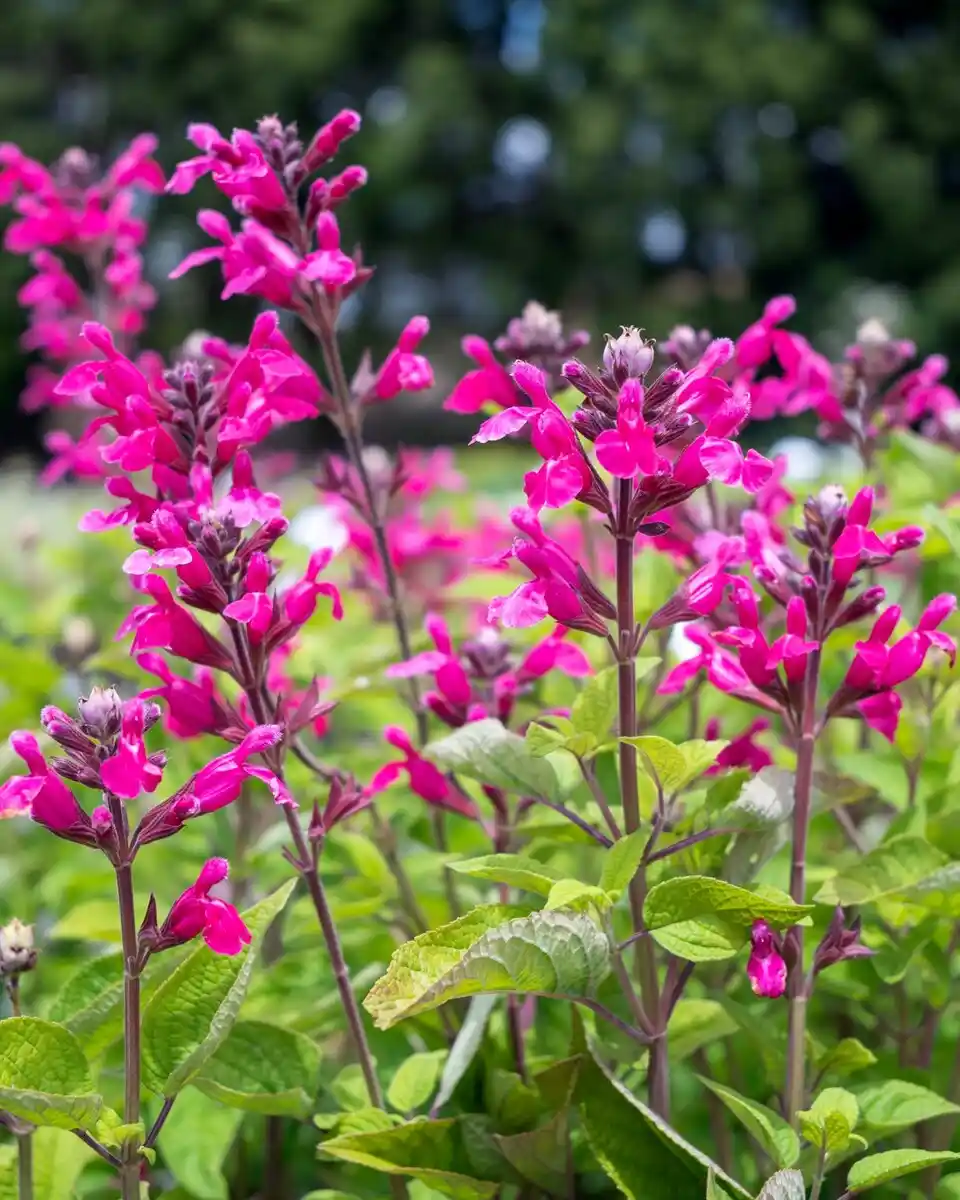
Few plants deliver as reliably. From perennial sages like ‘Caradonna’ to shrubby autumn sage (Salvia greggii), the tubular blossoms sit along tall wands—perfect perching/hovering lanes. If I want hummingbirds all season, I plant early and late-blooming salvias together and shear lightly midseason for a fresh flush.
Type: Annuals and perennials (varies by species)
USDA Zones: 4–11 (varies)
Color varieties: Mauve, pink, purple, blue, blazing red
Sun: Full sun
Soil: Well-drained; tolerates dry-to-average moisture
ID tip: Square stems; opposite leaves; repeated spires of small tube flowers.
5) Bleeding Heart (Lamprocapnos/Dicentra spectabilis)
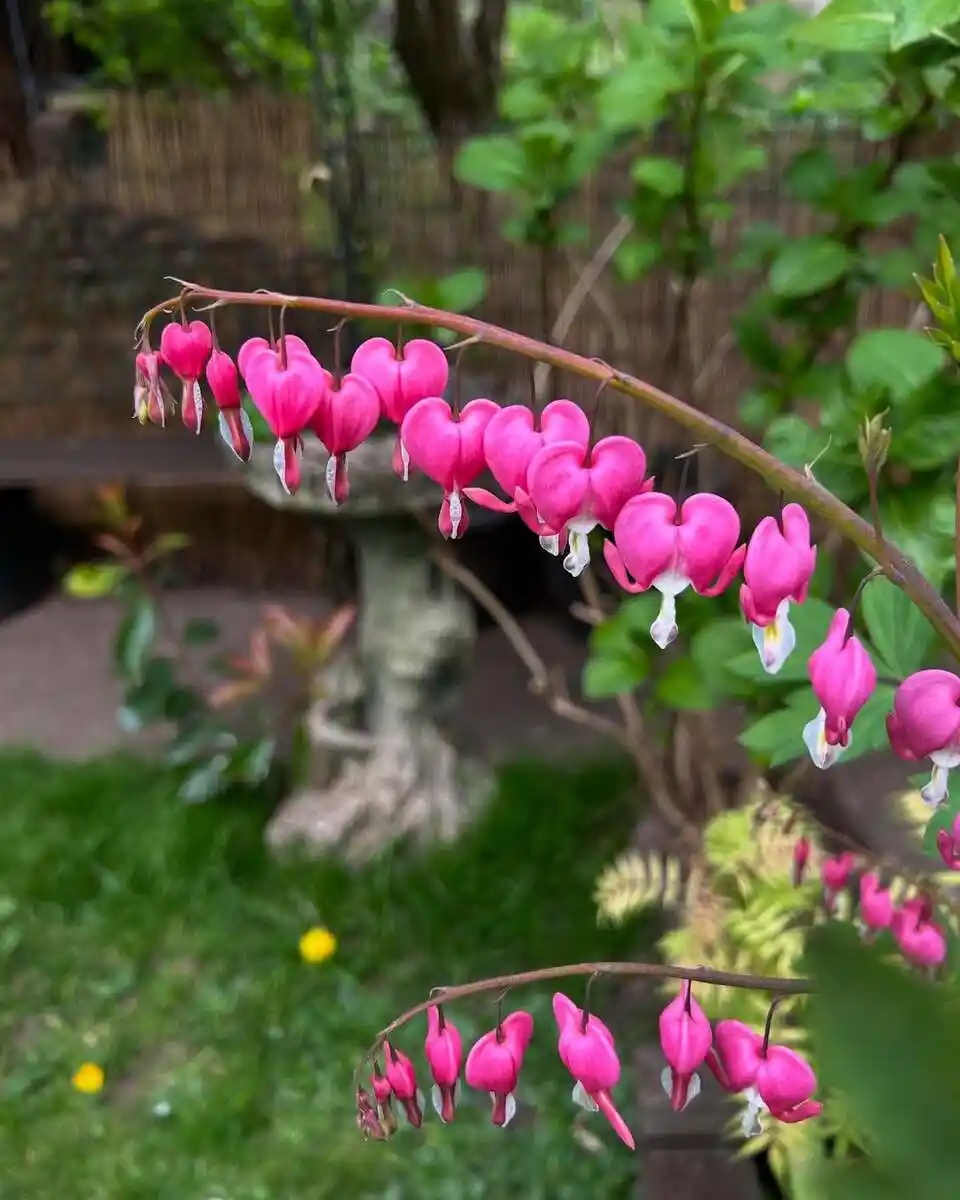
Shade gardeners, rejoice. Those tiny hearts dripping from arched stems are surprisingly hummer-friendly. It shines in cool spring weather, then retreats when heat hits, so pair it with summer stars that will fill the gap. I love the way its ferny backdrop softens all the bolder plants.
Type: Perennial
USDA Zones: 3–9
Color varieties: Pink, red, white
Sun: Partial to full shade (morning sun, afternoon shade is ideal)
Soil: Moist, humus-rich, well-drained; hates drought
ID tip: Heart-shaped pendants with a teardrop “bleed” at the bottom.
6) Butterfly Bush (Buddleja/Buddleia davidii)
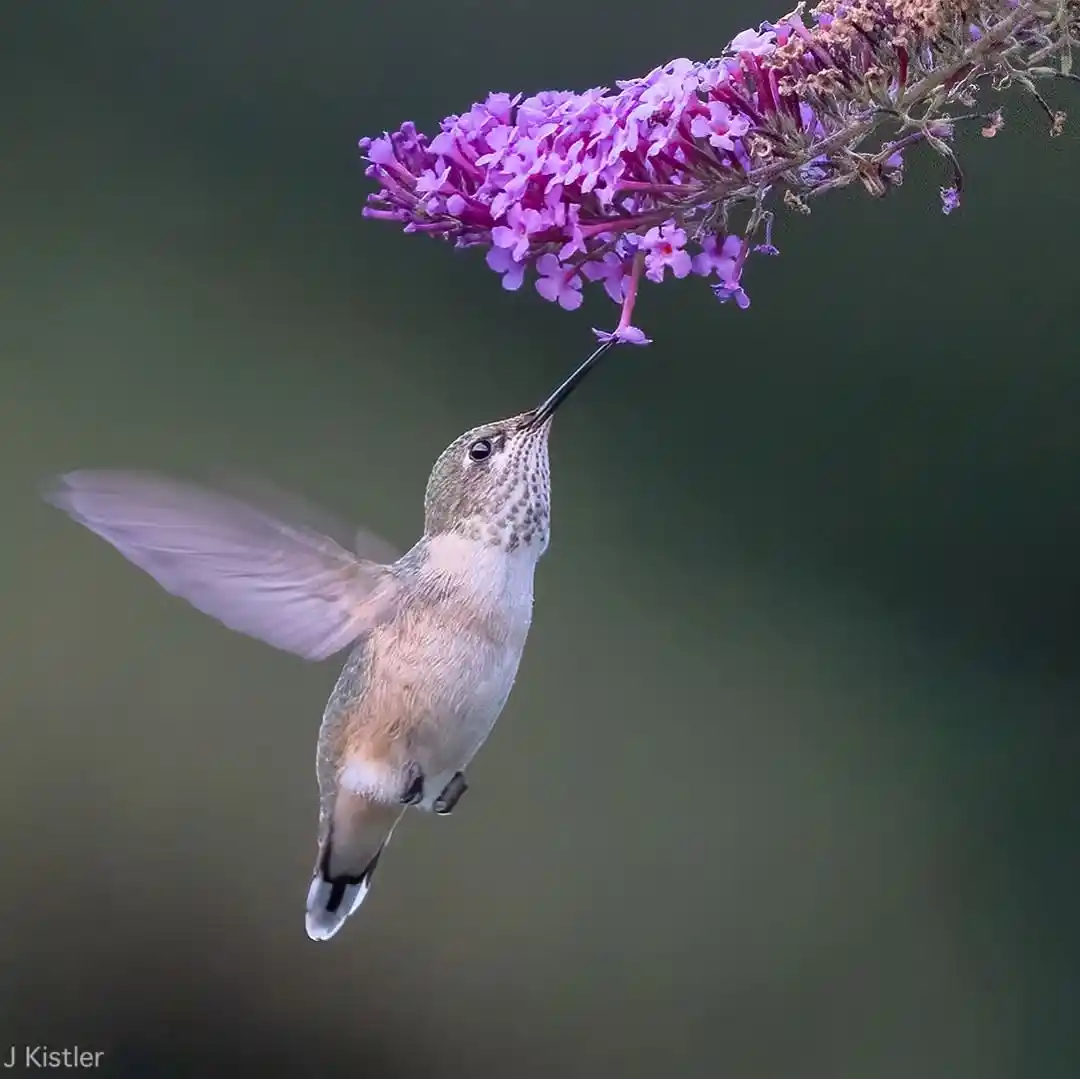
Long cones of nectar-heavy blooms keep traffic buzzing (and zipping) from summer to frost. The catch: it can be invasive in some regions, so choose newer, non-invasive or sterile cultivars. I keep a compact selection near a sunny path so I can watch hummingbirds work each cone like a bar crawl.
Type: Shrub
USDA Zones: About 5–9 (check cultivar)
Color varieties: Purple, pink, white, blue, yellow
Sun: Full sun
Soil: Well-drained, moderately fertile
Note: Invasiveness varies; opt for sterile or non-invasive series where recommended.
7) Trumpet Vine / Trumpet Creeper (Campsis radicans)
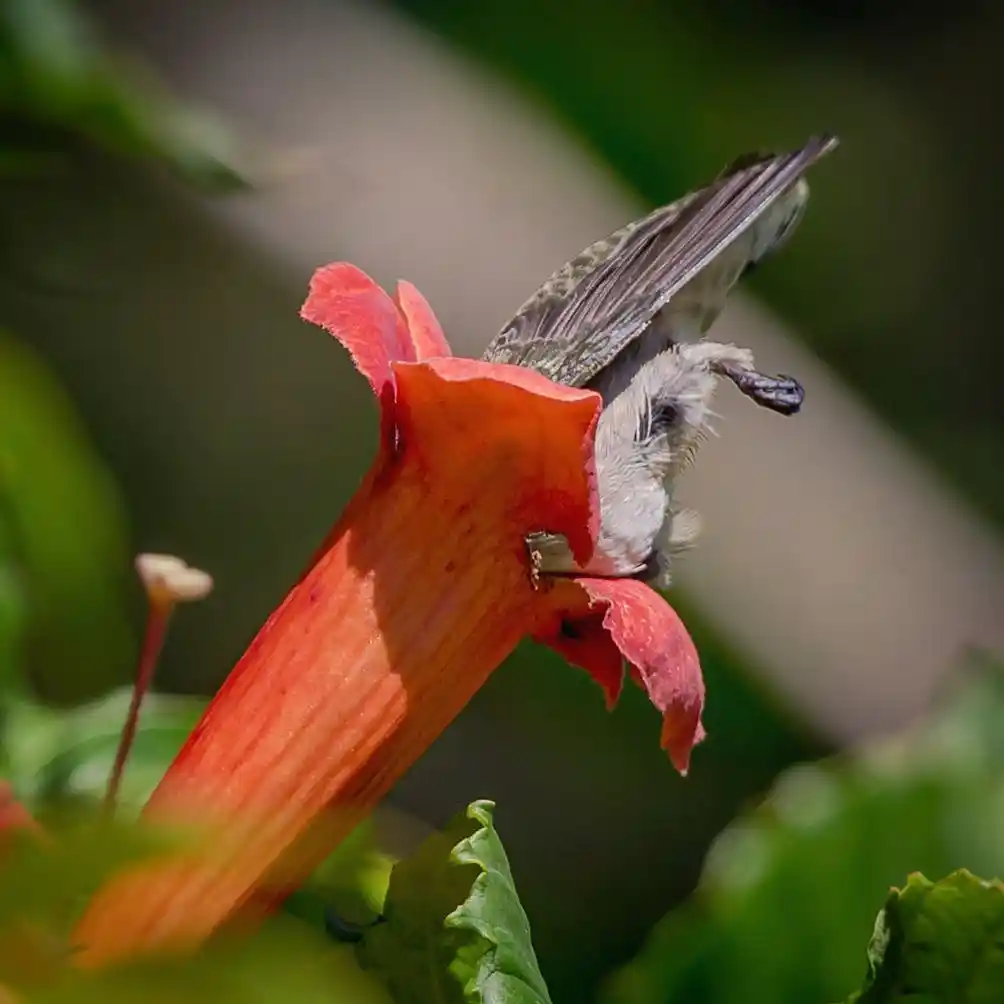
Red-orange trumpets, vigorous growth, and a hummingbird fan club—trumpet vine is the big, dramatic backdrop on fences and arbors. It’s also a plant with personality (a lot of it). Give it a strong support and be ready to prune because it can run hard in fertile ground.
Type: Woody perennial vine
USDA Zones: 4–9
Color varieties: Orange, red, yellow depending on variety
Sun: Blooms best in full sun; tolerates partial shade
Soil: Average, well-drained
Note: Considered aggressive and can be invasive in places—site thoughtfully.
8) Lupine (Lupinus spp.)
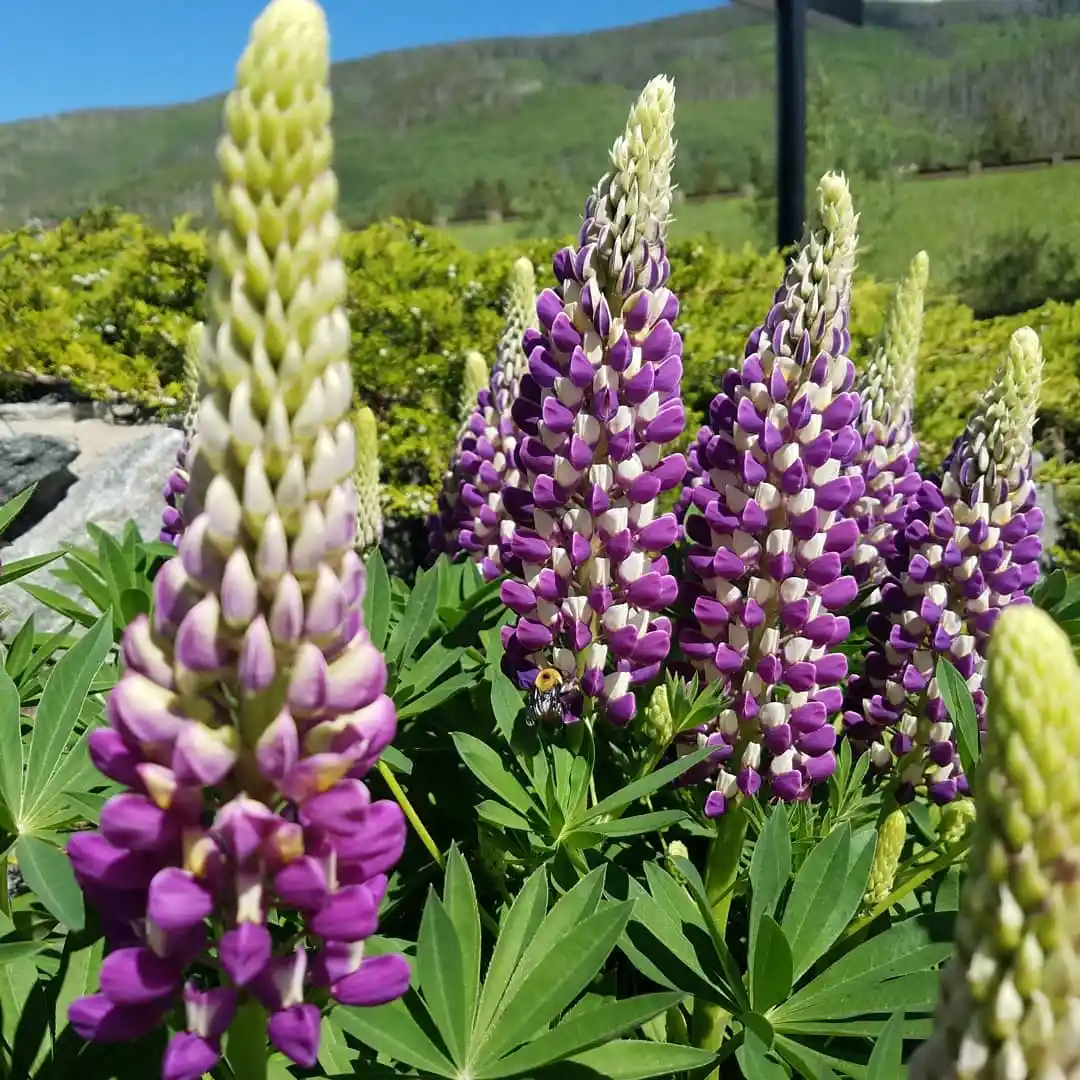
Tall spires with pea-like blooms pack early-season nectar just when hummingbirds are returning and hungry. Lupines also fix nitrogen, subtly improving soils for neighbors. I mix cool shades—indigo, violet, creamy yellow—so the spikes layer like a storybook meadow.
Type: Perennial (many species)
USDA Zones: Commonly 3–7 or 4–8 (species vary)
Color varieties: Blue, purple, pink, red, yellow, white
Sun: Full sun to partial shade
Soil: Sandy or loamy, well-drained (doesn’t love heavy clay)
ID tip: Palmate leaves; tall conical clusters.
9) Columbine (Aquilegia spp.)
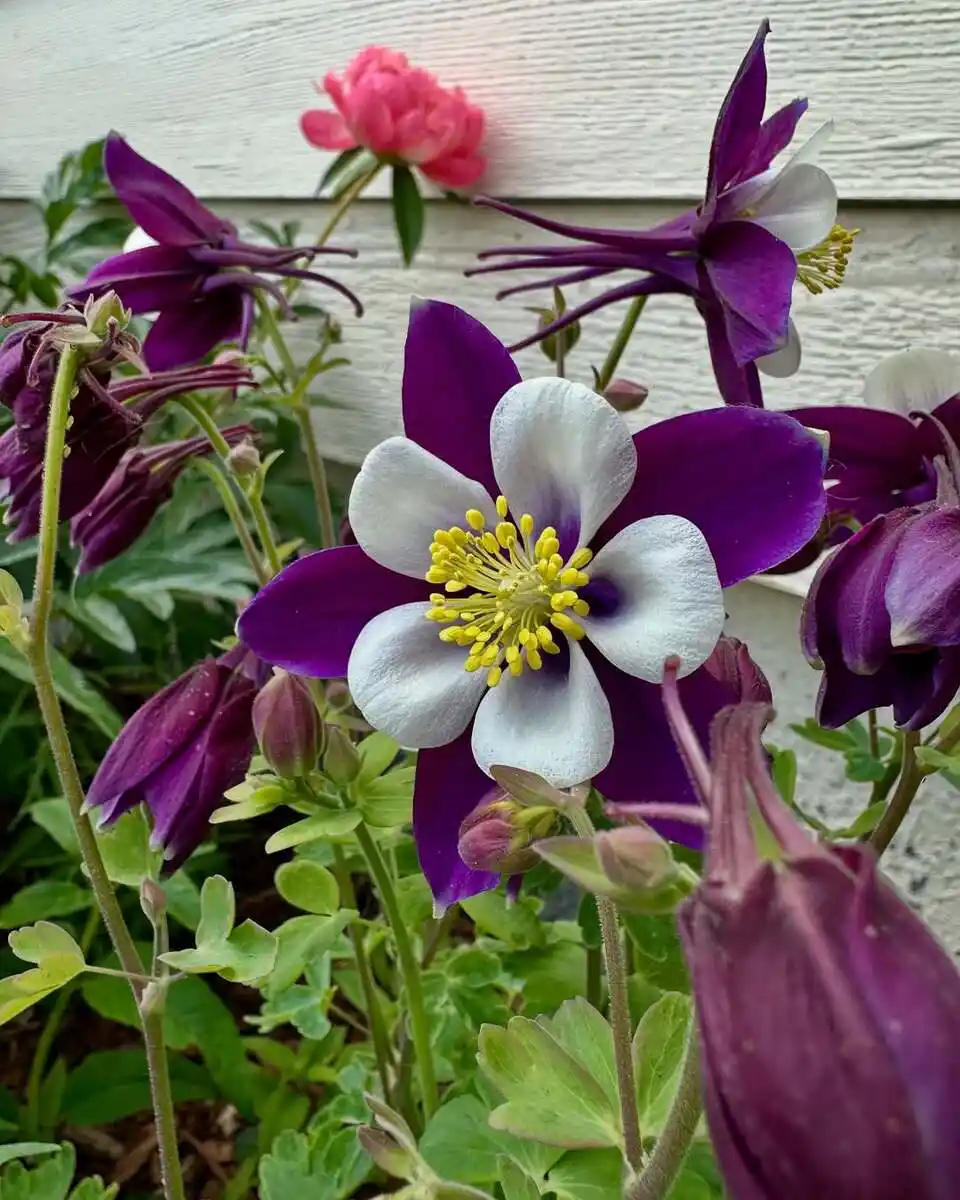
Those nodding, spurred blossoms are built for long beaks and even longer tongues. Spring-blooming columbine bridges the nectar gap beautifully, reseeding to form a cottagey drift over time. Eastern red columbine (A. canadensis) is a hummer classic.
Type: Perennial
USDA Zones: ~3–9
Color varieties: Red, yellow, pink, purple, blue, white (and bicolors)
Sun: Full sun to partial shade
Soil: Fertile, well-drained; appreciates consistent moisture in heat
ID tip: Five backward-pointing spurs (nearly a signature “straw” for hummingbirds).
10) Beardtongue (Penstemon spp.)
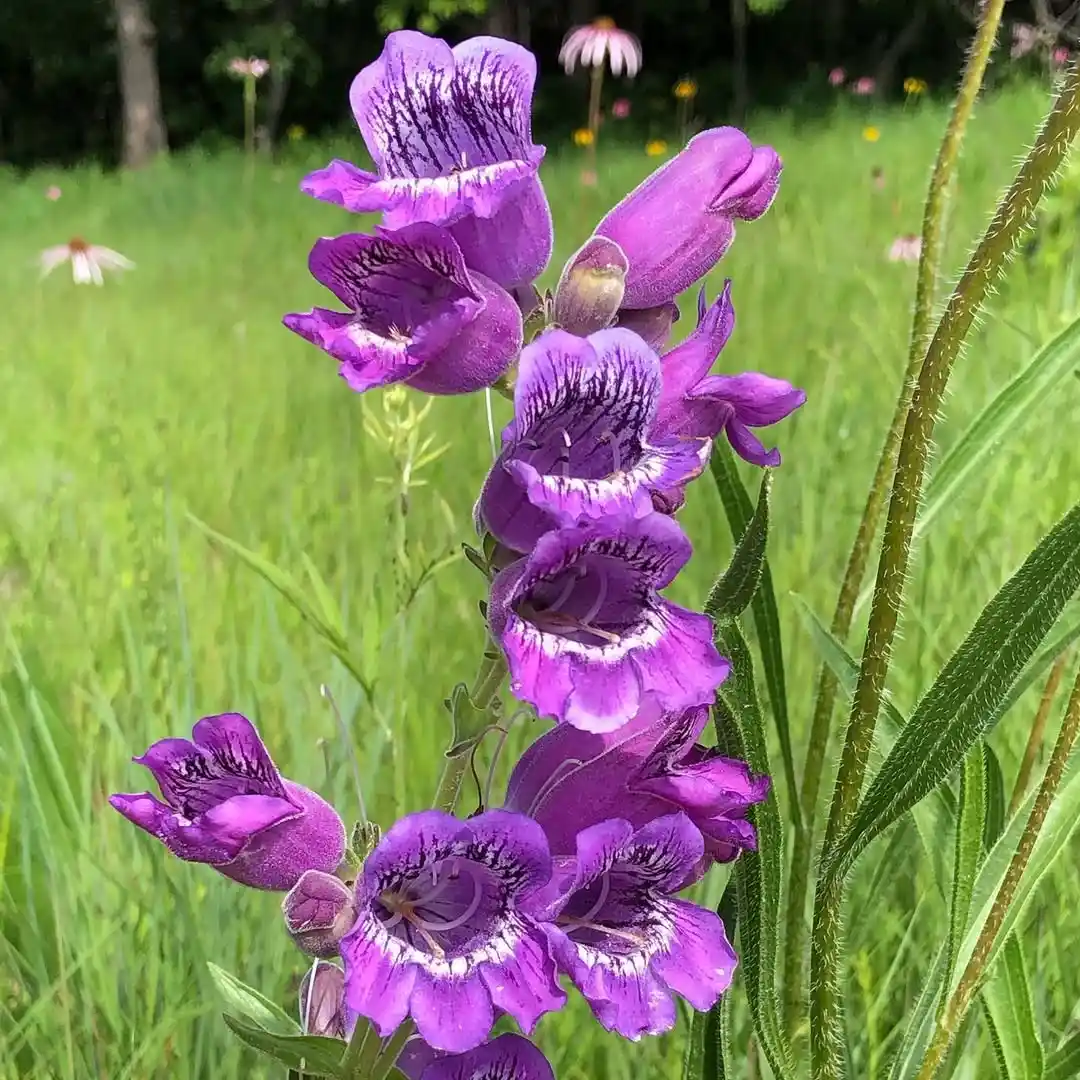
Sleek wands carry dozens of bell-shaped tubes—like a tasting flight for every pass. Penstemons are drought tolerant once established and don’t love crowding, so give them breathing room with gravelly soil if you can. Cut back stalks after bloom to encourage a second wave.
Type: Perennial
USDA Zones: 3–8 or 5–8 (varies by species)
Color varieties: Purple, blue, orange, red, yellow, pink, white
Sun: Full sun
Soil: Well-drained; sandy or rocky is ideal
ID tip: Opposite leaves; tubular “bearded” throats.
11) Trumpet Honeysuckle (Lonicera sempervirens)
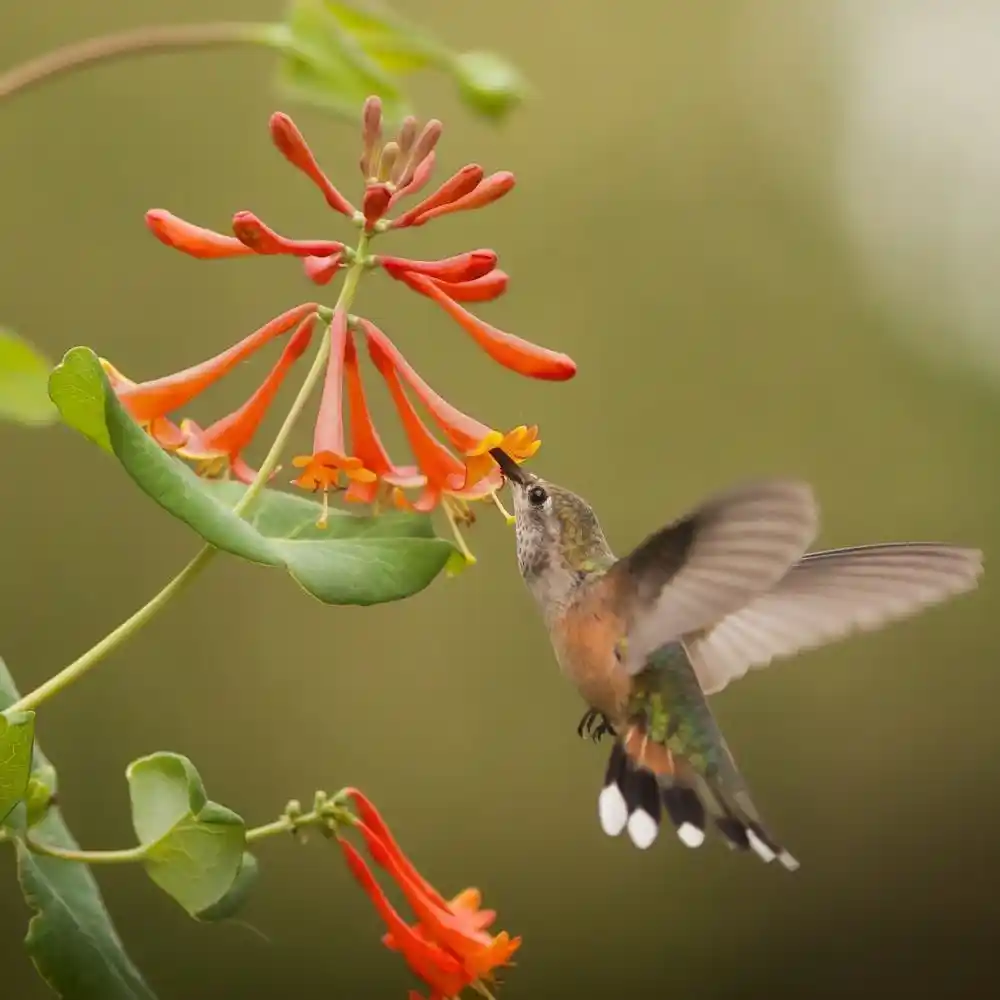
A tidy, well-behaved native vine (unlike its invasive cousin, Japanese honeysuckle). Coral-red tubes arrive early and keep coming, especially if you train it on a trellis where it can bask. I love this one as a gateway arch because you’ll get fly-throughs at eye level.
Type: Perennial vine
USDA Zones: About 5–9
Color varieties: Coral to red/orange
Sun: Full sun to part shade
Soil: Loamy to sandy, well-drained; moderate moisture
Bonus: Deer-resistant tendencies compared with many vines.
12) Coral Bells (Heuchera spp.)
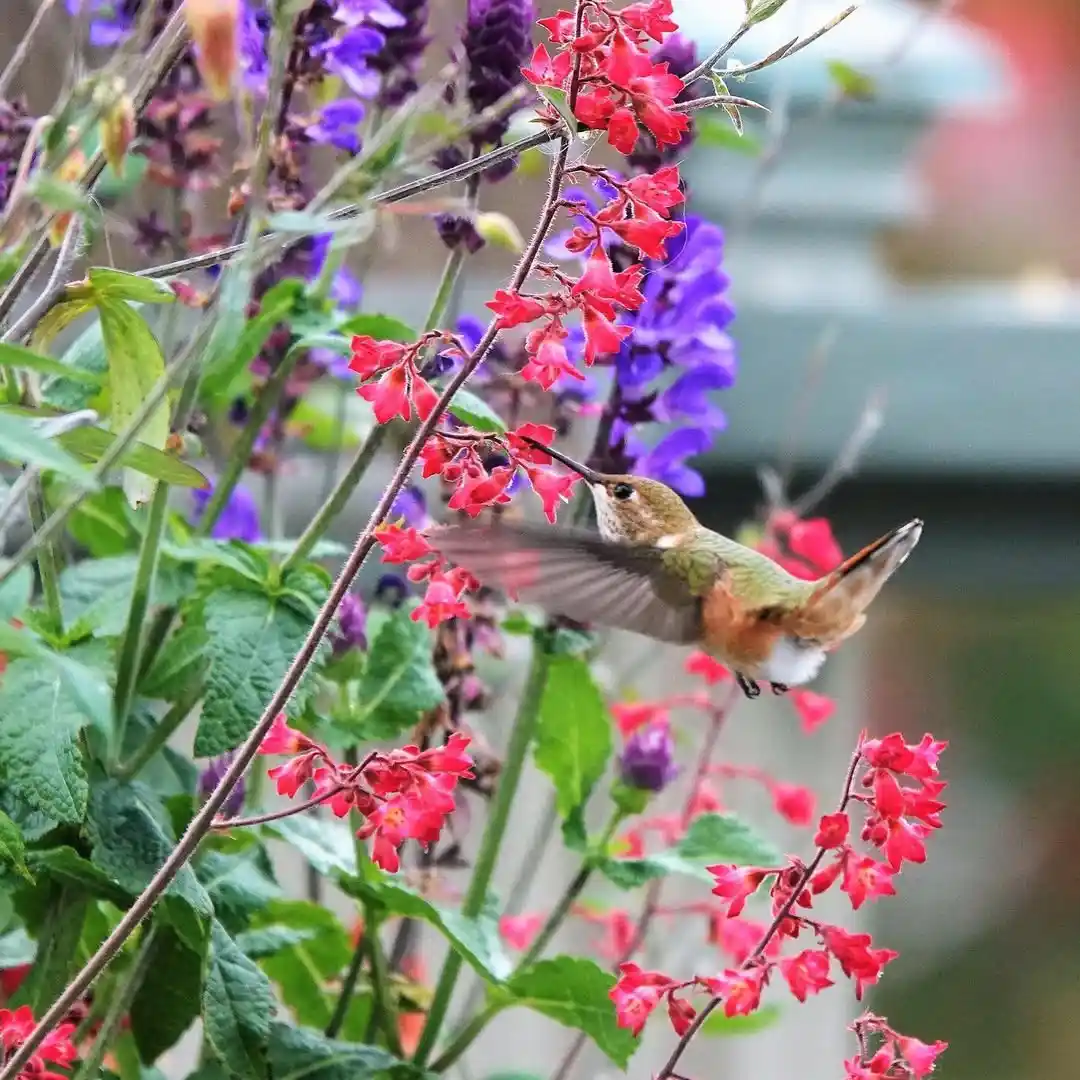
You plant Heuchera for the foliage fireworks—plums, limes, caramel—but don’t sleep on its airy, bell-shaped flowers. Hummingbirds hover through these like confetti in late spring and summer. It’s a great edge or container plant that lightens up shade.
Type: Short-lived perennial (divide for longevity)
USDA Zones: ~4–9 (some references list 3–9)
Color varieties: Flowers in red, white, pink, orange; leaves in many colors
Sun: Full sun to partial shade (varies by cultivar and climate)
Soil: Rich, moist but well-drained; appreciate organic matter
Tip: Deadhead to extend bloom time into fall.
13) Flowering Tobacco (Nicotiana alata)
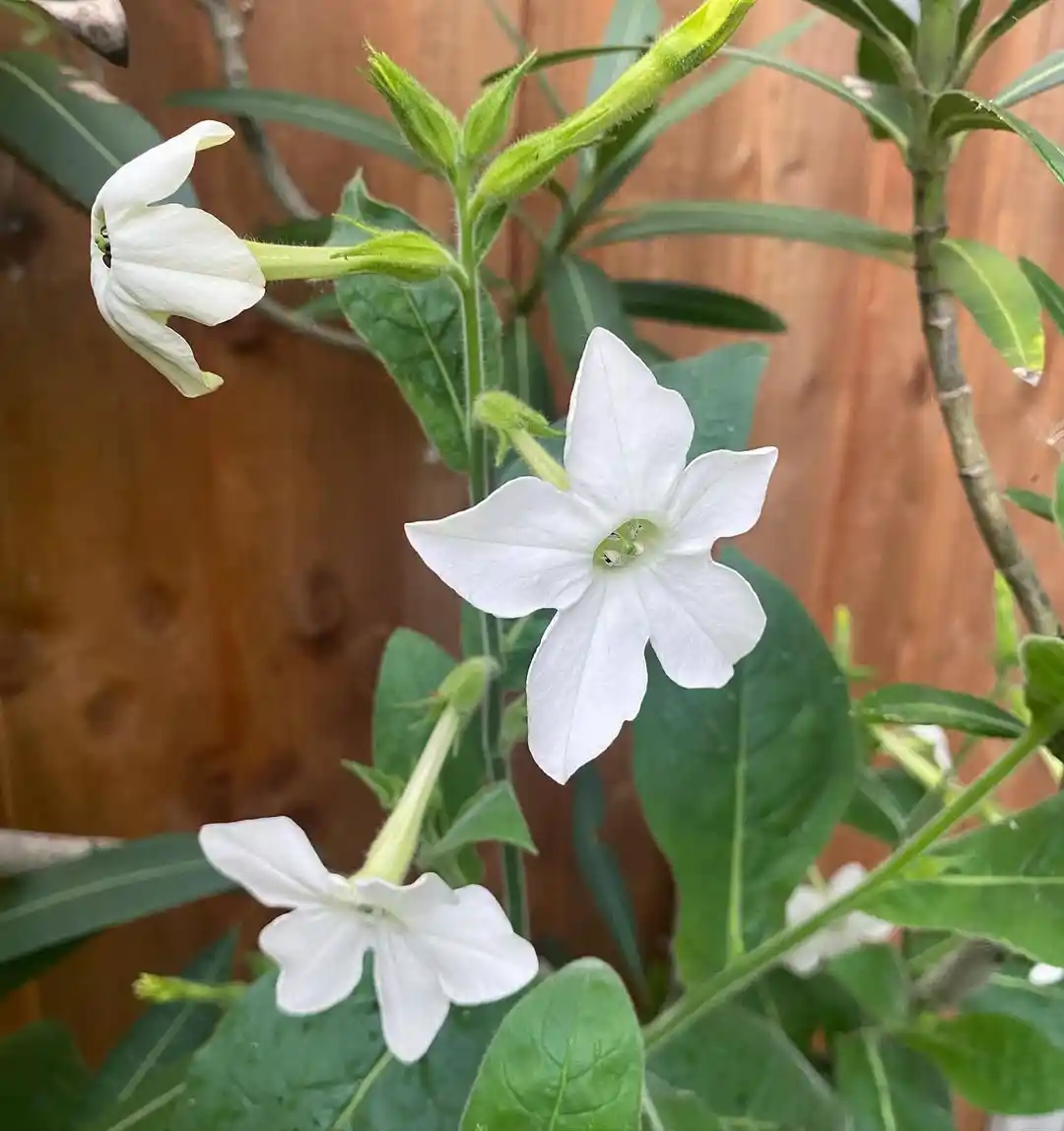
So underrated. Starry, trumpet-faced blooms keep hummingbirds busy long into fall, especially in warm climates. It’s easy, fragrant at night, and lovely with salvias and zinnias. Just note that all parts are toxic—so site thoughtfully around pets and kids.
Type: Typically grown as an annual
USDA Zones: Warm climates; handle as annual elsewhere
Color varieties: White, pinks, lime, purples depending on type
Sun: Full sun to partial shade
Soil: Fertile, well-drained, consistently moist
Extra: Often deer-resistant compared with many annuals.
14) Delphinium (Delphinium spp.)
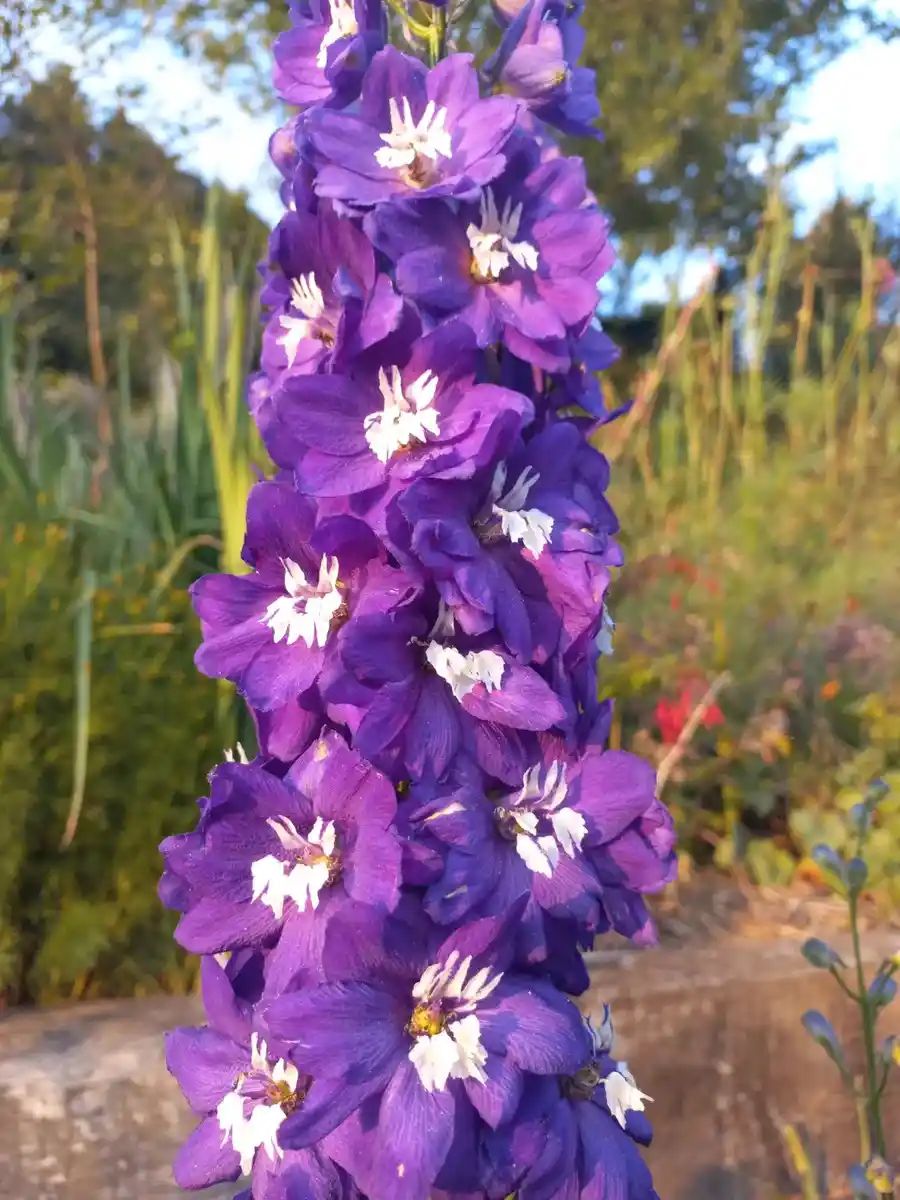
Tall, aristocratic spires bring hummingbirds up to shoulder height (and make you feel fancy). They prefer cooler climates and rich soil, rewarding you with intense blues, purples, pinks, and whites. Stake taller varieties and trim after flowering for potential repeat shows.
Type: Perennial
USDA Zones: 3–7
Color varieties: Blue, purple, pink, white
Sun: Full sun to part shade
Soil: Fertile, well-drained
Pairing: Looks incredible with bee balm and phlox for layered hummer lanes.
15) Daylily (Hemerocallis spp.)
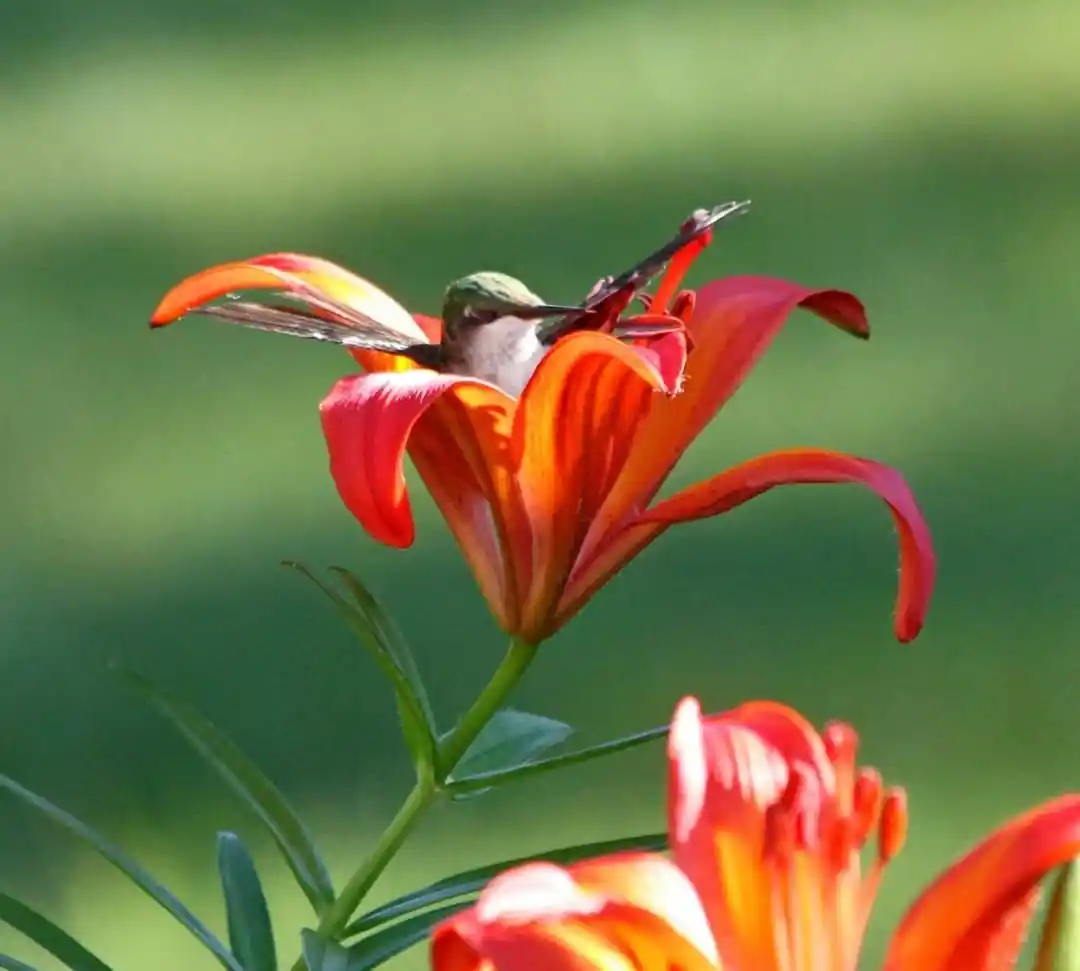
Each bloom lasts a day, but the scapes keep coming for weeks. Hummingbirds appreciate the steady buffet, and you’ll appreciate the zero-drama maintenance. Darker daylilies look richer with a bit of afternoon shade; lighter shades can handle full blaze.
Type: Perennial
USDA Zones: 3–10
Color varieties: Red, orange, yellow, purple, pink (endless cultivars)
Sun: Full sun (some tolerate partial shade)
Soil: Deep, fertile, medium loam; tough across many soils
Care: Plant in early spring/fall; divide clumps when crowded.
16) Fuchsia (Fuchsia spp.)
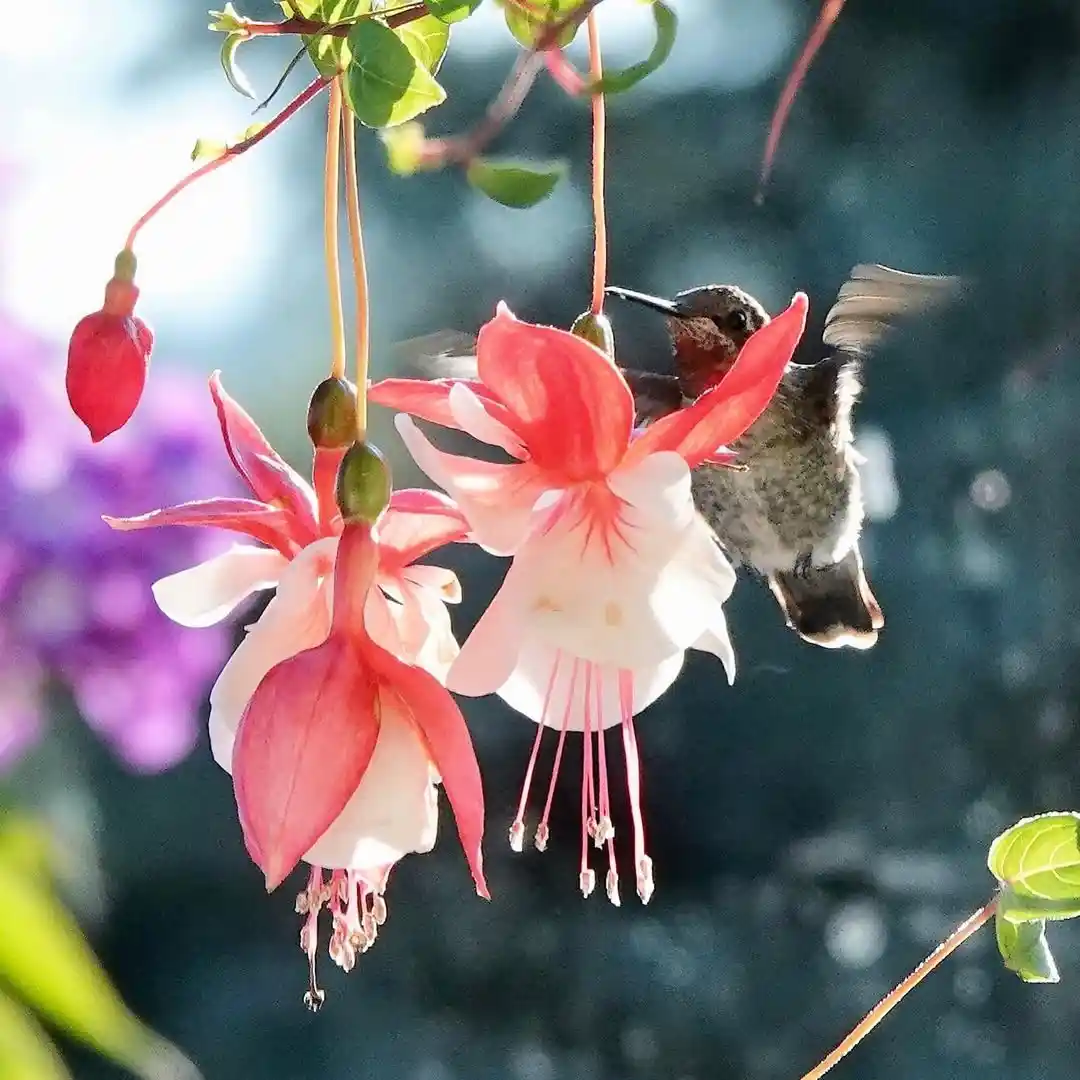
Those teardrop blossoms—outer sepals flared pink to red, inner corollas purple or white—are made for hovering sips. Fuchsias prefer cooler temps and humidity; they shine in baskets and shaded patios where their pendants can dangle freely.
Type: Tender perennial (grown as annual in cooler climates)
USDA Zones: 10–11 outdoors; everywhere else in summer containers
Color varieties: Purple, pink, red, white, violet
Sun: Partial to full shade (morning sun is welcome)
Soil: Moist but well-drained, never bone dry
Trick: Pinch lightly for bushier plants and more blooms.
17) Lantana (Lantana camara & hybrids)
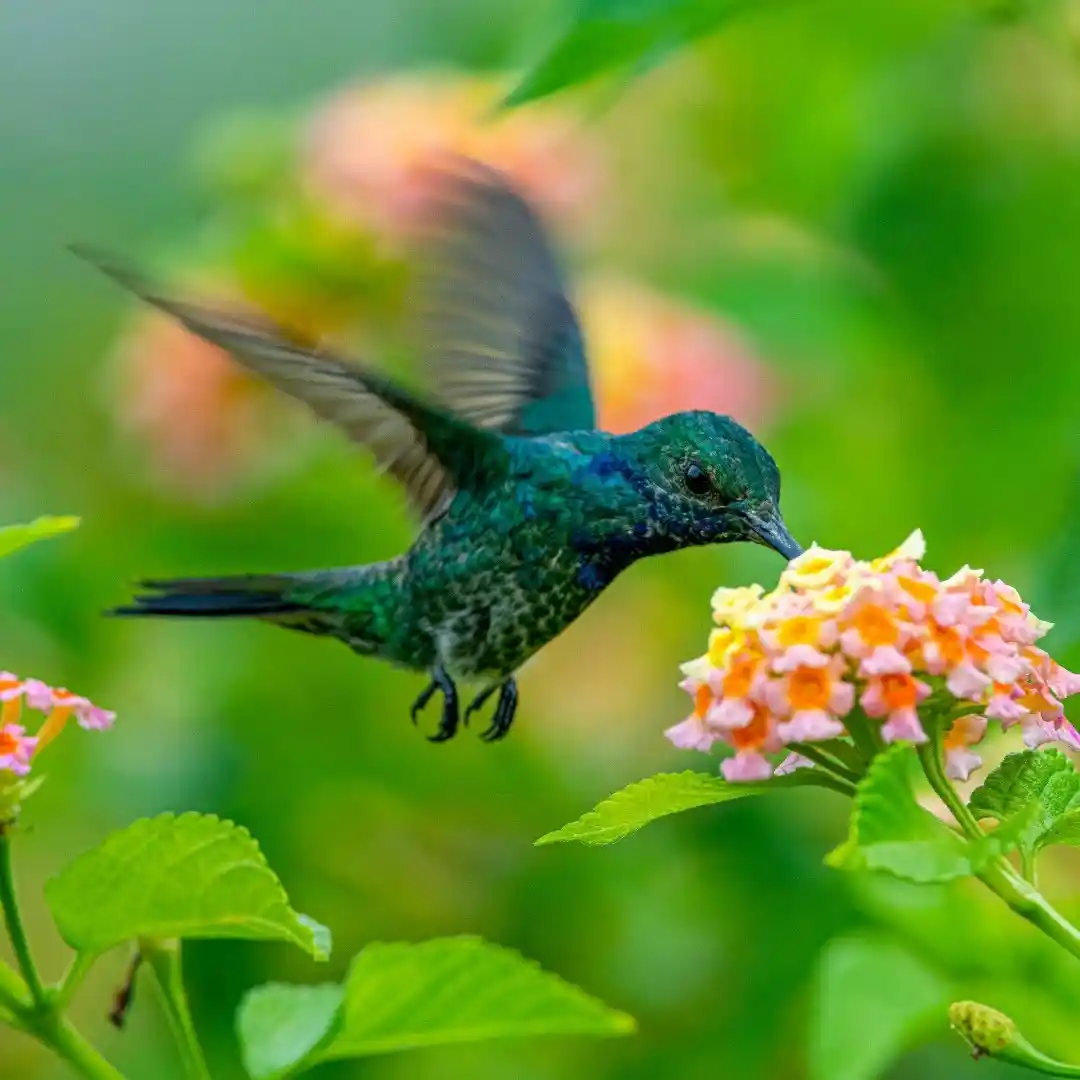
Clusters of hot-color florets are like hummingbird confetti. Lantana laughs at heat and drought once established and blooms nonstop. In warm climates it forms a small shrub; elsewhere, treat as an annual and use weeping types in baskets.
Type: Annual in cool zones; shrubby perennial in Zones ~8–11
USDA Zones: Typically 8–11 (perennial)
Color varieties: Mixed bicolors in reds, oranges, golds, pinks
Sun: Full sun
Soil: Well-drained; lean soil is fine
Note: In some regions older types can be invasive—choose modern, non-invasive selections.
18) Cuphea (Cuphea spp., a.k.a. cigar/firecracker plant)
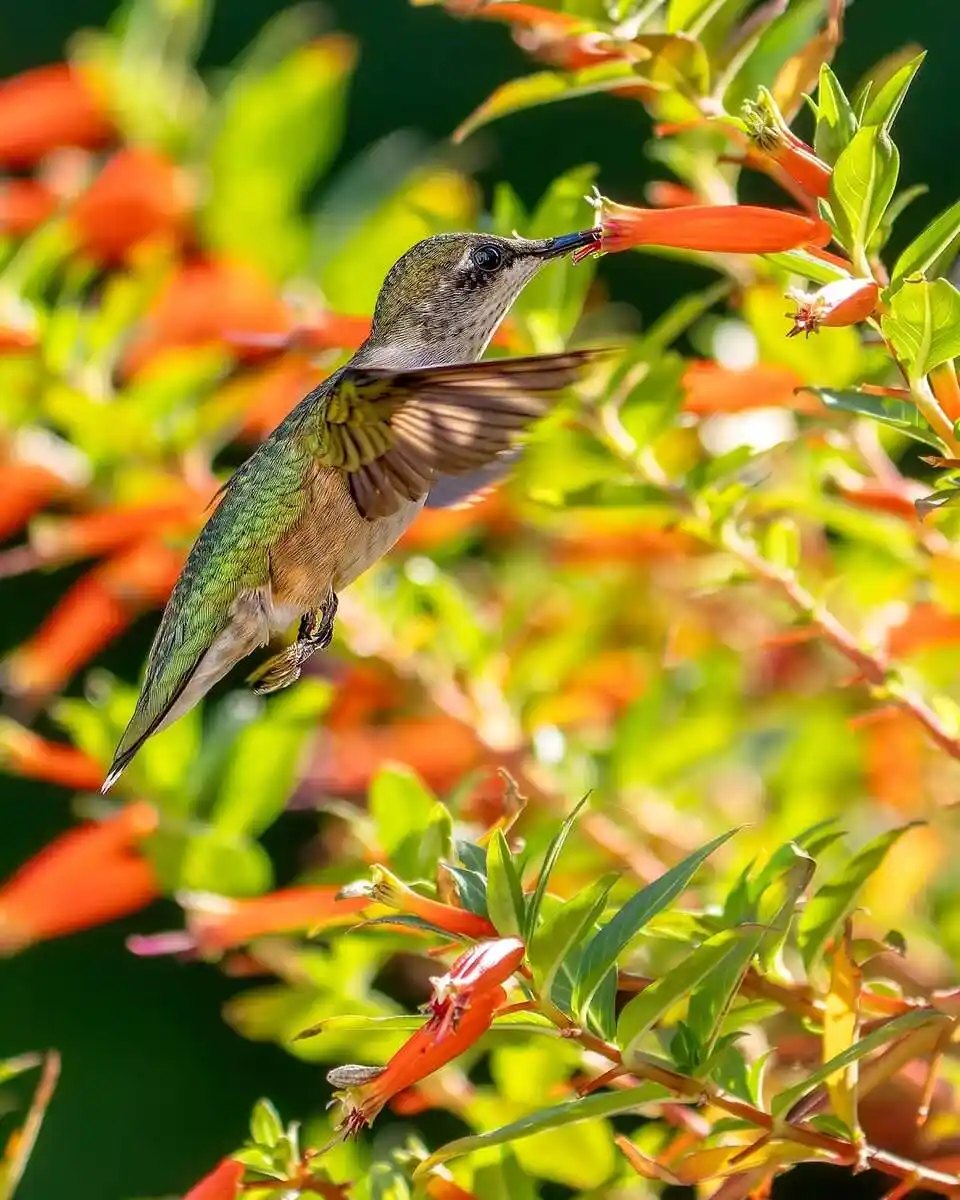
Tiny tubes by the hundreds—no wonder hummingbirds treat Cuphea like a favorite café. It thrives in heat and carries flowers late into fall if you feed and water consistently. I love it at the front of beds where you can see the constant fly-bys.
Type: Annual in cool zones; perennial in warm zones
USDA Zones: ~8–11 (perennial)
Color varieties: Orange, red, yellow, purple (varies by species)
Sun: Full sun
Soil: Well-drained; average moisture
Habit: Low, mounding; great for edges and containers.
19) Catmint (Nepeta spp.)
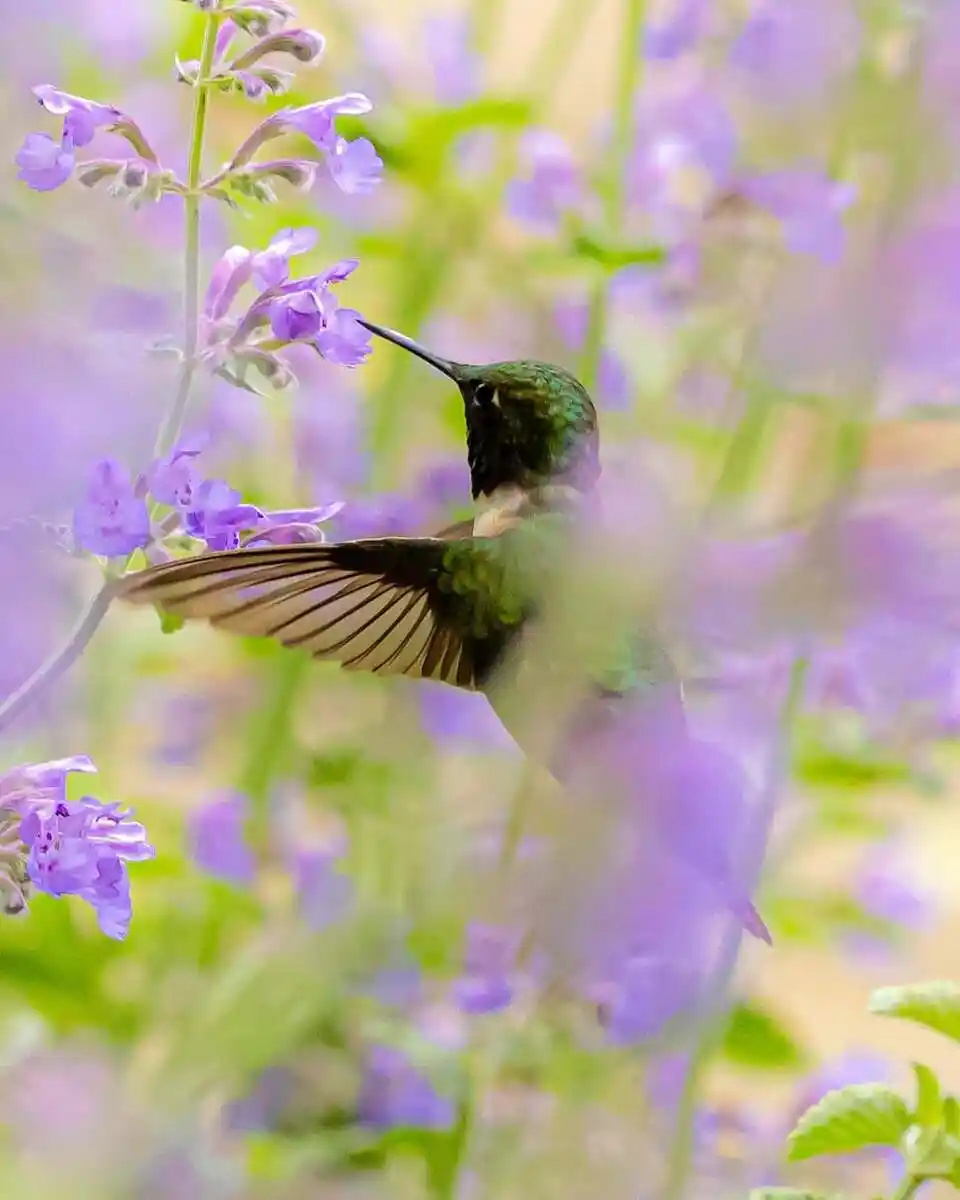
Soft, lacy foliage and long, lavender-blue wands—catmint brings in all the pollinators, hummingbirds included. It’s drought-tolerant, forgiving, and repeats bloom if you shear it after the first flush. Plant in drifts for a cloud of movement.
Type: Perennial
USDA Zones: 4–8
Color varieties: Purples, pinks, white (mostly cool tones)
Sun: Full sun to partial
Soil: Well-drained, not fussy
Bonus: Aromatic foliage helps resist nibblers.
20) Phlox (Phlox paniculata & others)
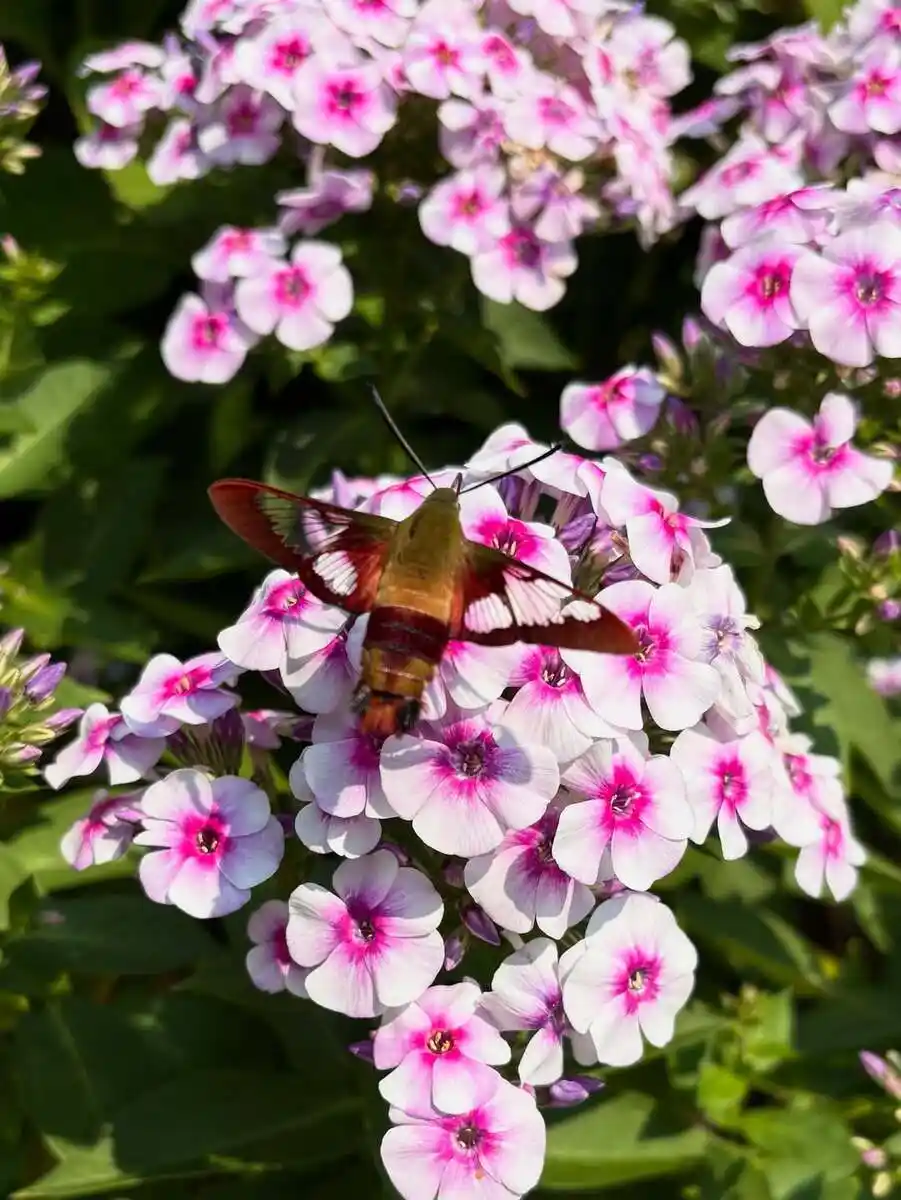
Phlox brings scent, color, and a hummingbird chorus. The flower heads are like pastel scoops that rebloom with deadheading. Choose mildew-resistant cultivars and give them airflow; they’ll repay you with weeks of nectar.
Type: Perennial (some annual species exist)
USDA Zones: ~3–9 (species/cultivar dependent)
Color varieties: White, pink, purple, blue; many bicolors
Sun: Partial to full sun
Soil: Rich, well-drained loam with consistent moisture
Care: Deadhead to keep blooms rolling.
21) Red Hot Poker (Kniphofia spp.)
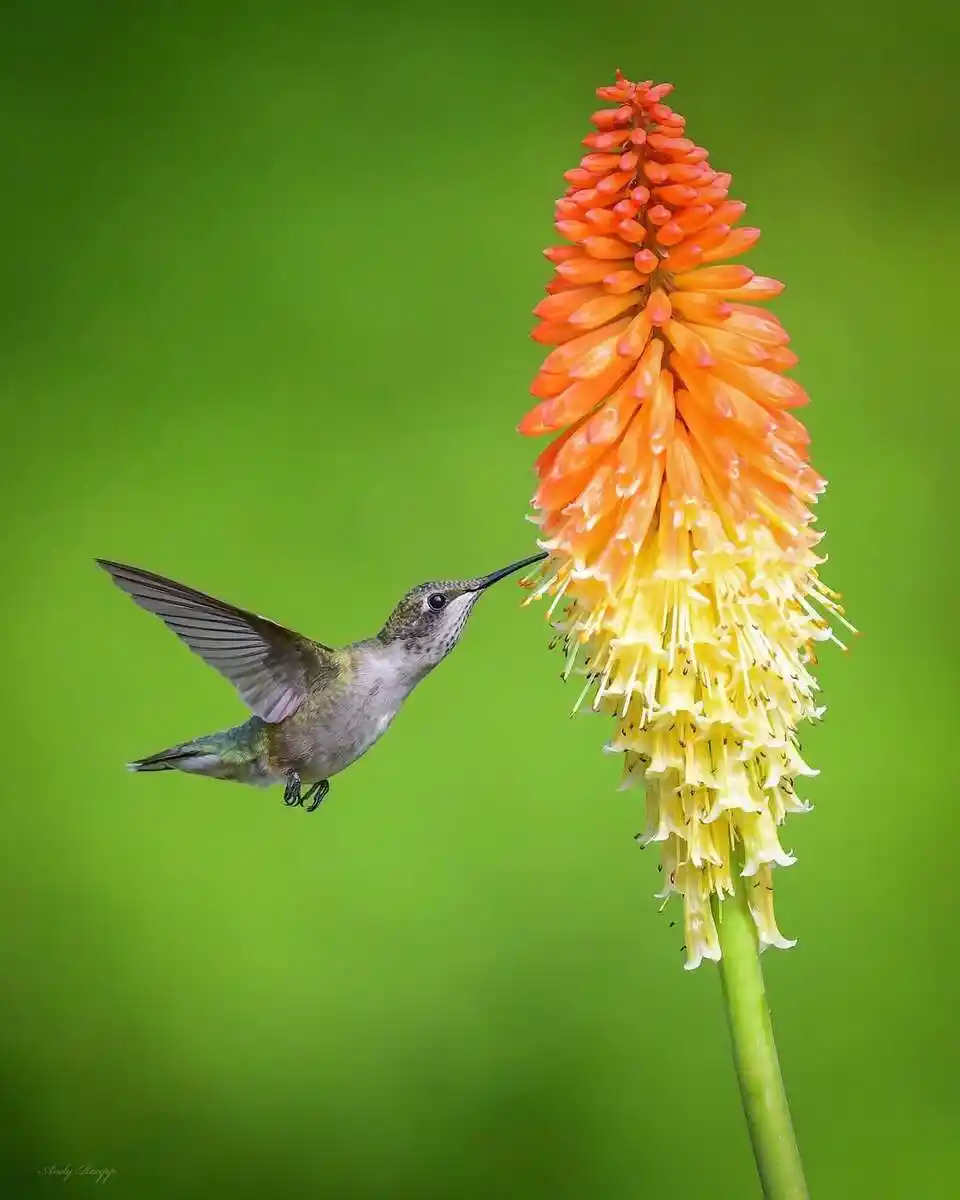
These torch-like wands fade from yellow to orange-red, shouting “refill station” from across the yard. They’re surprisingly hardy when given drainage and full sun. In hot regions, a sliver of afternoon shade keeps flowers fresh.
Type: Herbaceous perennial
USDA Zones: 5–9
Color varieties: Red, yellow, orange (varies by cultivar)
Sun: Full sun
Soil: Well-drained; winter-wet soils can cause rot
Landscape use: Vertical accent; pairs beautifully with agastache.
22) Hummingbird Mint (Agastache spp.)
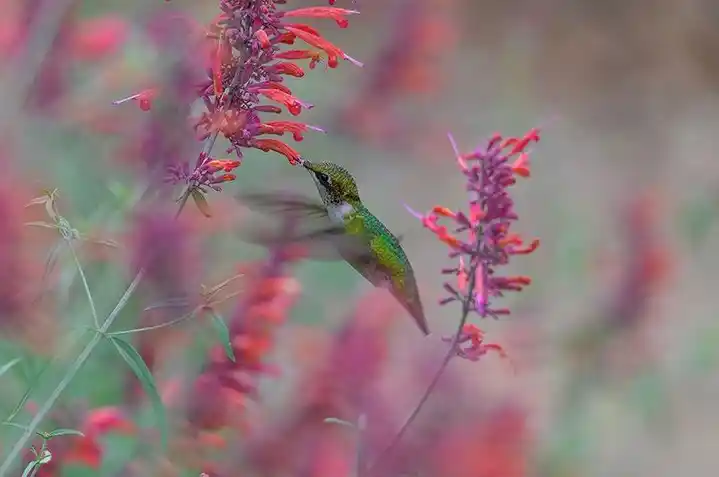
It’s literally named for them. Long-blooming, fragrant spikes in sorbet shades carry nectar for months. Deer and rabbits usually pass it by, making it a low-fuss, high-return choice in dry borders or containers.
Type: Perennial
USDA Zones: ~5–10 (varies by species)
Color varieties: Pink, purple, peach, orange-red depending on cultivar
Sun: Full sun
Soil: Fertile, loamy, well-drained; drought-tolerant once established
Bonus: Pollinator party—bees and butterflies join the queue.
23) Morning Glory (Ipomoea purpurea)
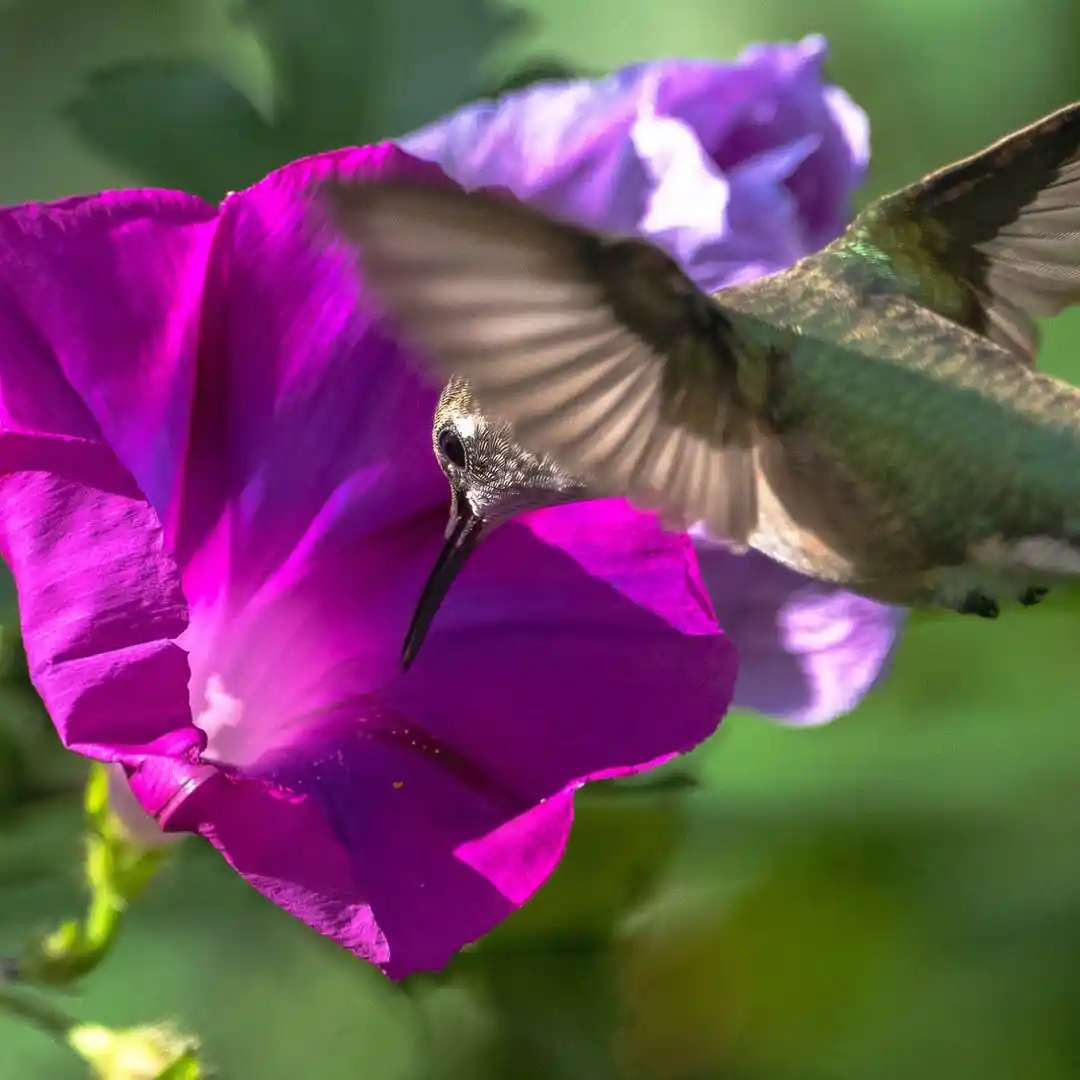
Vigorous vines that twine quickly and cover arbors in luminous funnels of blue, purple, magenta, or white. Morning glories open with the sunrise and hum along summer to frost, especially if you give them steady water and a warm, sunny wall to climb.
Type: Annual vine (self-seeds)
USDA Zones: 2–11 (as annual)
Color varieties: Purple, pink, blue, white
Sun: Full sun
Soil: Moist, well-drained
Note: Provide a trellis or netting; it climbs by tendrils.
24) Canna Lily (Canna indica & hybrids)
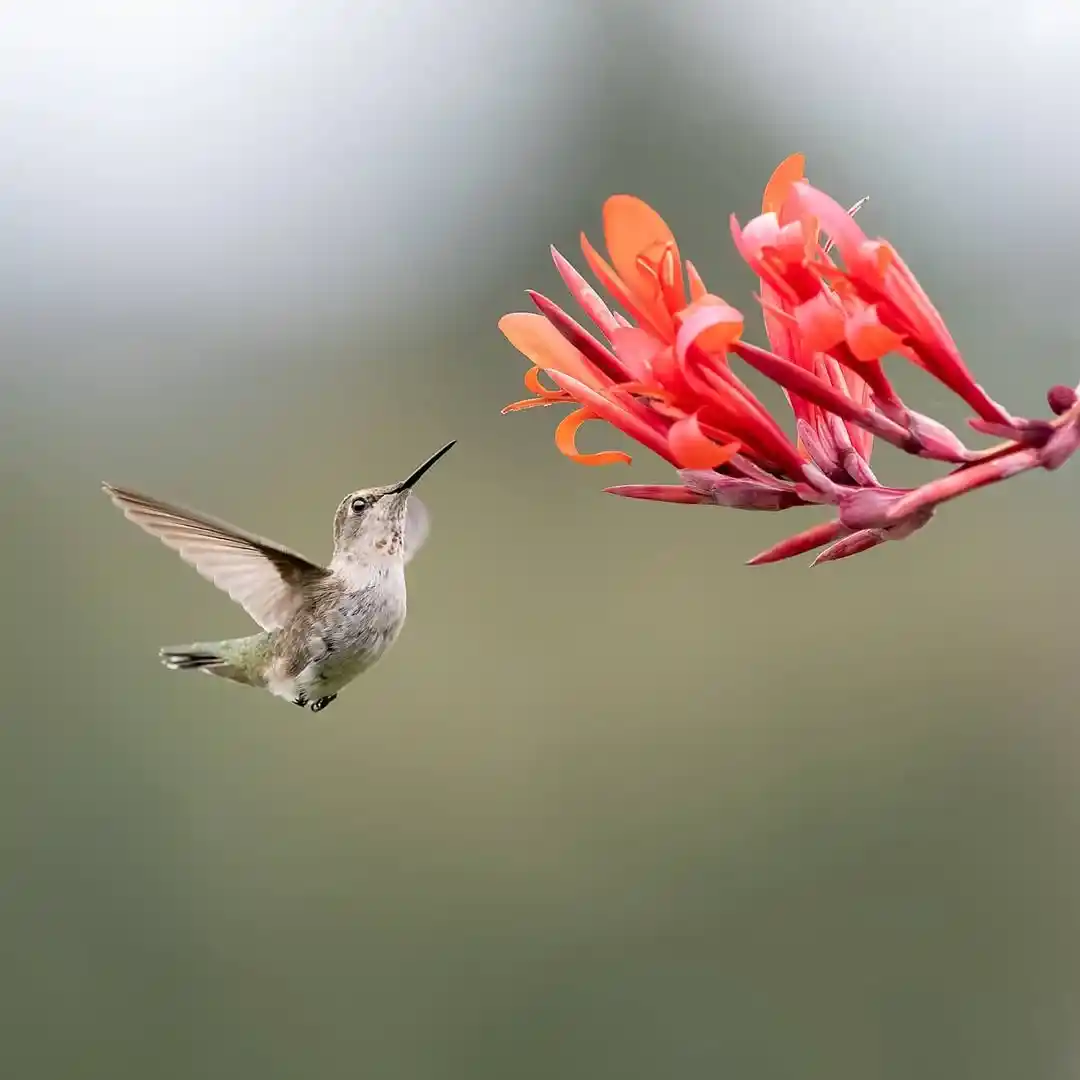
Bold, tropical foliage and big painterly blooms—cannas bring hummingbirds in at knee height and up. Great in big pots or sunny beds, especially where you need a little drama. Keep them evenly watered for lush leaves and continuous flowers.
Type: Tender perennial (lift rhizomes in cold zones)
USDA Zones: ~8–11 perennial; grow as annual elsewhere
Color varieties: Red, orange, yellow, pink
Sun: Full sun
Soil: Moist, well-drained; loves warmth and regular moisture
Design tip: Use as a backdrop for low Cuphea or zinnias.
25) Sunflower (Helianthus annuus)
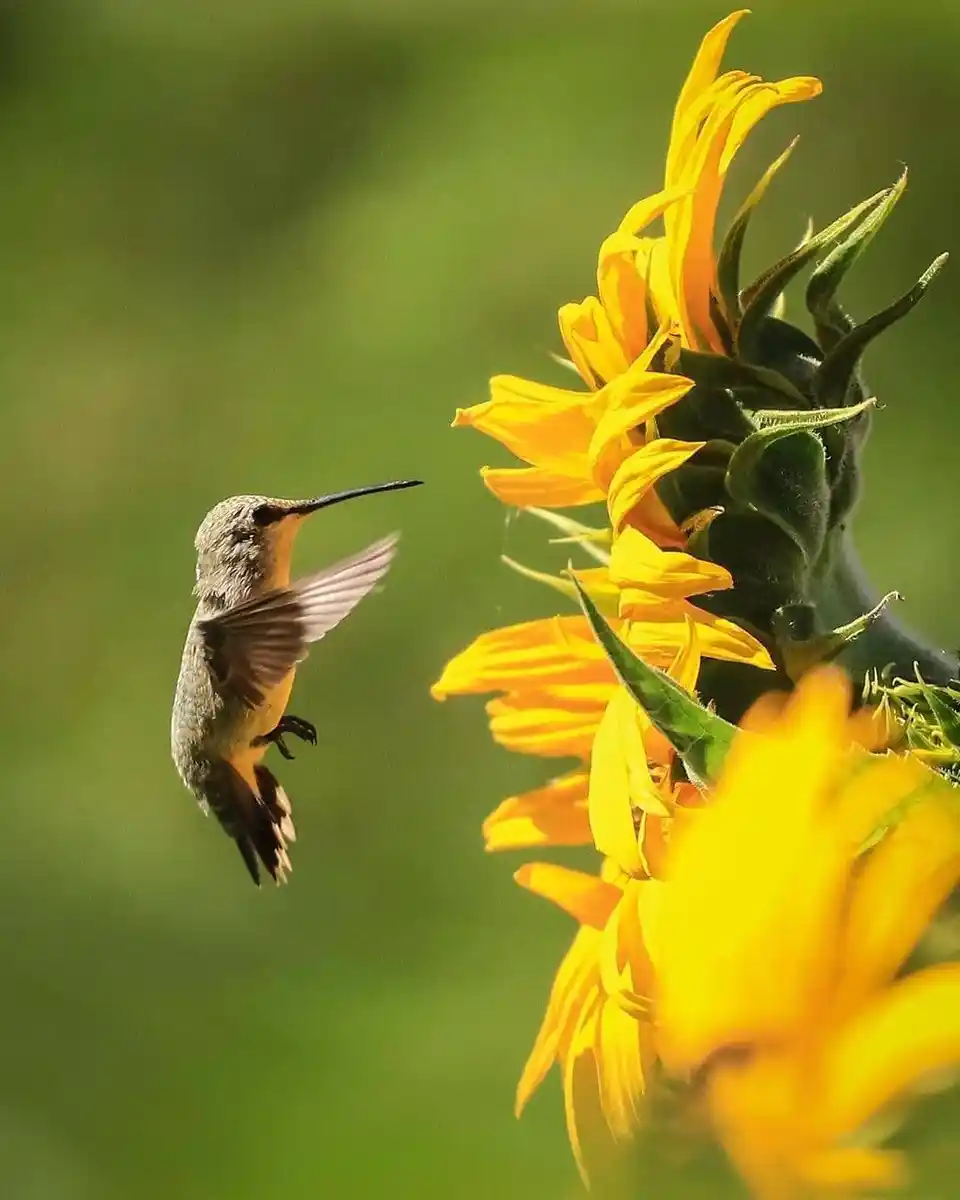
Yes—hummingbirds will visit sunflowers (and the whole patch becomes a pollinator carnival). They’re easy from seed, fast, and come in heights from balcony-friendly to giant. Stagger sowing every two weeks for a long-running buffet.
Type: Annual (some perennial species exist)
USDA Zones: Annual everywhere; some species perennial ~6–9
Color varieties: Yellows, oranges, reds, bicolors
Sun: Full sun
Soil: Well-drained, moderately fertile
Tip: Try ‘Lemon Queen’ in pollinator gardens.
26) Rose of Sharon (Hibiscus syriacus)
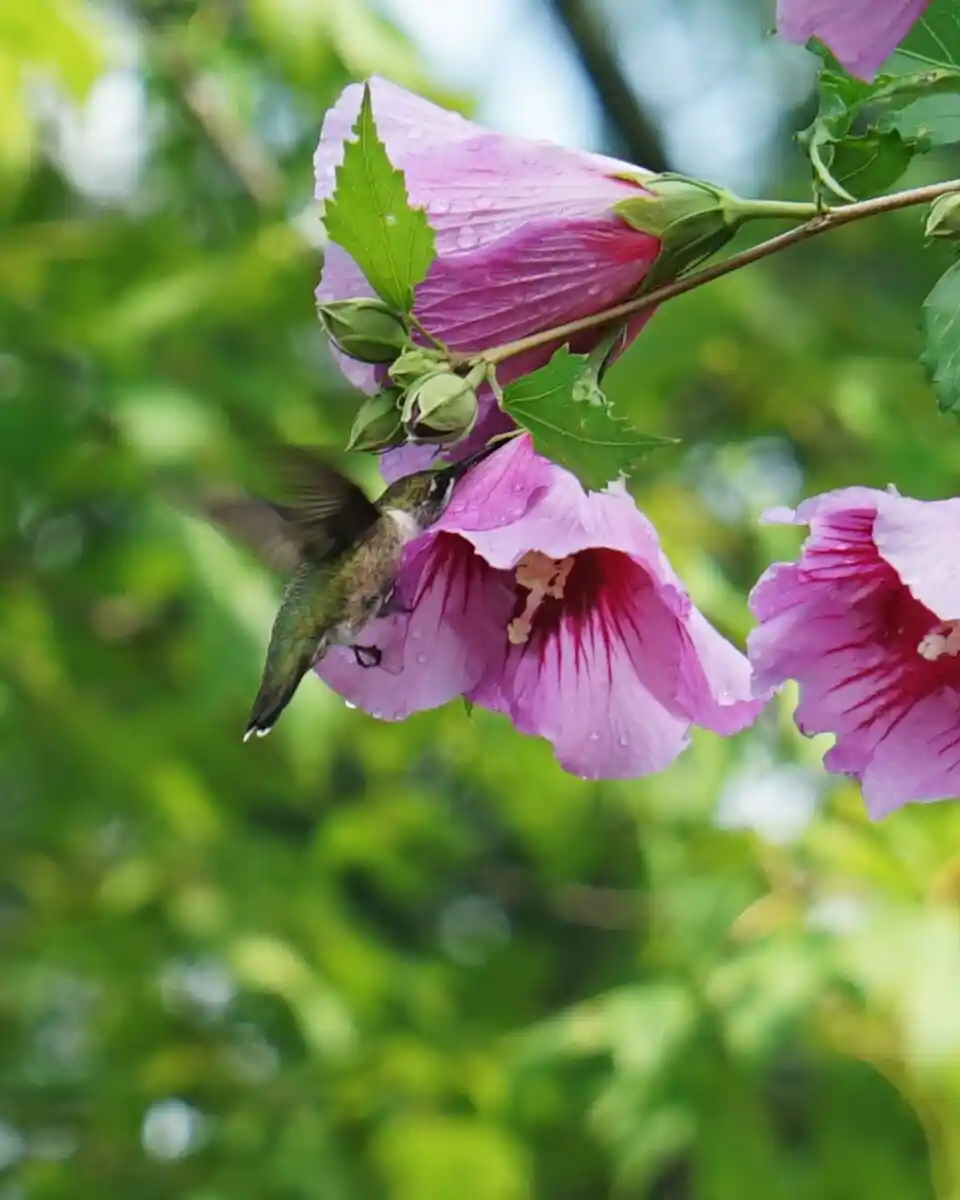
Late-season hibiscus-like blooms keep nectar flowing when summer beds start to tire. New columnar forms fit small spaces, hedges, or narrow side yards. It’s tough and heat-tolerant once established.
Type: Flowering shrub
USDA Zones: 5–9
Color varieties: Pink, purple, white, blue, often with a darker eye
Sun: Full sun
Soil: Average, well-drained
Note: Considered invasive in some areas—verify locally before planting.
27) Cardinal Climber (Ipomoea × sloteri / I. quamoclit)
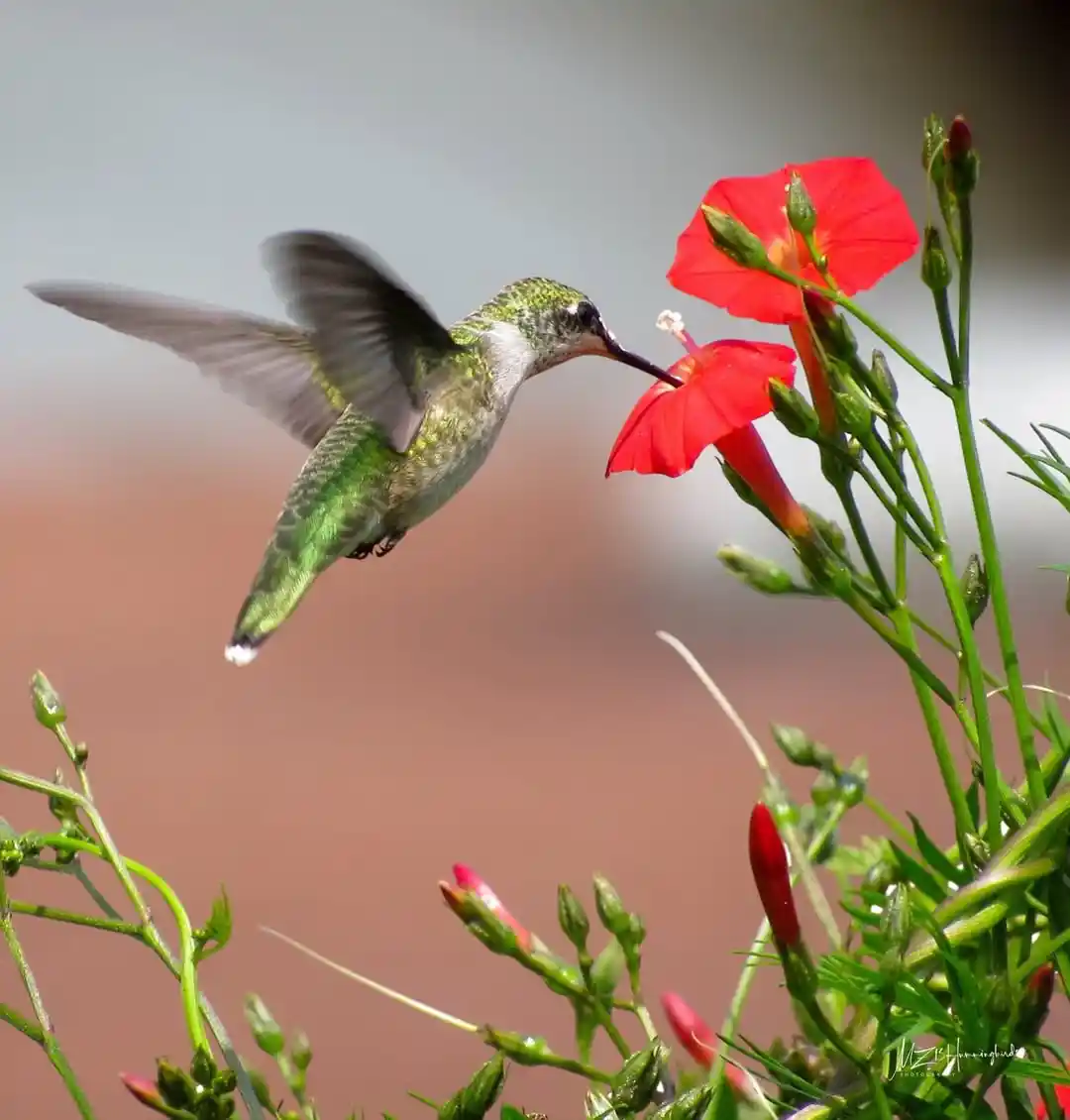
Feathery foliage plus bright red, starry trumpets—this annual vine is pure joy. It rockets up trellises and fences, covering them in nectar-rich stars. I like mixing it with morning glories for a red-and-blue “flag” effect that hummingbirds love.
Type: Annual vine (perennial only in the warmest zones)
USDA Zones: Annual most places; perennial in ~10–11
Color varieties: Red (the classic hummer color)
Sun: Full sun
Soil: Average, well-drained
Sow note: Start from seed outdoors after frost; it’s fast.
How to string the best flowers to attract hummingbirds into a season-long buffet
I plan in “waves.” Early spring nectar (columbine, bleeding heart) hands off to the long summer set (salvia, bee balm, zinnia, penstemon, phlox), then late anchors (butterfly bush, rose of Sharon, cuphea). Mix heights so birds feel safe—vines for perches, shrubs for cover, and sunny edges for those nonstop annuals. Keep flowers that attract hummingbirds grouped in small drifts: fewer species per cluster, more clusters overall. You’ll see less territorial drama and more happy hoverers.
Soil, sun, and sip habits (fast checklist)
- Full sun = more nectar for most of the best flowers to attract hummingbirds.
- Drainage matters. Many stars (salvia, penstemon, agastache) pout in soggy soil.
- Moisture lovers (cardinal flower, canna, phlox) fill gaps where rain collects.
- Deadhead zinnia, phlox, salvia; shear catmint midseason for repeats.
- Choose natives or non-invasive cultivars where shrub/vine issues exist (trumpet vine, butterfly bush).
FAQ: best flowers to attract hummingbirds (and how to get more visits)
1) What colors do hummingbirds prefer most?
Bright reds lead the pack, followed by warm oranges, hot pinks, and purples—especially in tubular shapes that fit their beaks. That’s why so many of the best flowers to attract hummingbirds lean scarlet/coral tones.
2) I have afternoon shade—what are good hummingbird flowers for me?
Try fuchsia, bleeding heart, coral bells, or trumpet honeysuckle (it handles part shade). These hummingbird-friendly plants keep visits going without all-day sun.
3) Which plants bloom longest for season-wide nectar?
Salvias, zinnias, cuphea, agastache, and butterfly bush carry a long torch. Combine them with spring starters like columbine to cover the whole calendar. These are core flowers that attract hummingbirds for months.
4) Are feeders necessary if I plant the best flowers to attract hummingbirds?
Not strictly. When blooms are abundant, birds often prefer natural nectar. Feeders help in early spring, heat waves, or flower lulls. Keep feeder sugar water fresh (no dye).
5) What about invasive risks with butterfly bush and trumpet vine?
Choose sterile or non-invasive butterfly bush cultivars where required, and give trumpet vine a strict, well-defined support with regular pruning. Always check local guidance.
6) My soil is heavy clay. Which of the best plants for hummingbirds will tolerate it?
Phlox and daylily are more forgiving with amended clay (add compost, improve drainage). Penstemon, salvia, and agastache prefer lean, well-drained sites or raised beds.
7) I need low-maintenance options for pots. Any favorites?
Cuphea, lantana, zinnia, and fuchsia are container naturals. Pair a thriller (canna, salvia) with spillers (cuphea) and fillers (zinnia) for constant hummingbird flower action.
8) How close should I plant the best flowers to attract hummingbirds to reduce fighting?
Spread multiple feeding stations across the yard—several clumps of nectar plants spaced apart. This gives subdominant birds places to feed without constant chasing.
9) Do hummingbirds really like shade gardens?
They’ll work shady edges if you give them blooms like fuchsia, coral bells, and bleeding heart, plus nearby sunny patches for high-octane plants. Mix exposures in the same view.
10) Can I rely on annuals alone?
Absolutely—zinnias, cuphea, petunias, and sunflowers can carry a smaller space. I still tuck in a few perennials (bee balm, salvia) so the garden has a backbone year to year. These are still some of the best flowers to attract hummingbirds.
11) What’s a quick 3-plant combo for beginners?
Try salvia + zinnia + cuphea. Full sun, steady bloom, and nectar galore—classic plants to attract hummingbirds without fuss.
12) Any small-space trellis choice that isn’t too wild?
Trumpet honeysuckle gives you the tubular blossoms without the rampant spread. Great on a slim obelisk or balcony trellis.
Final planting nudge
If you want constant action, plant in waves and keep a watering can handy. Choose a few sure bets from this list of the best flowers to attract hummingbirds, add one vine for drama, and tuck in a shrub for late-season nectar. I’m a big believer that a tiny, well-curated bed can outdraw a giant yard that’s thin on blooms. And once those little jet-fighters find you? They’ll be back—again and again.

